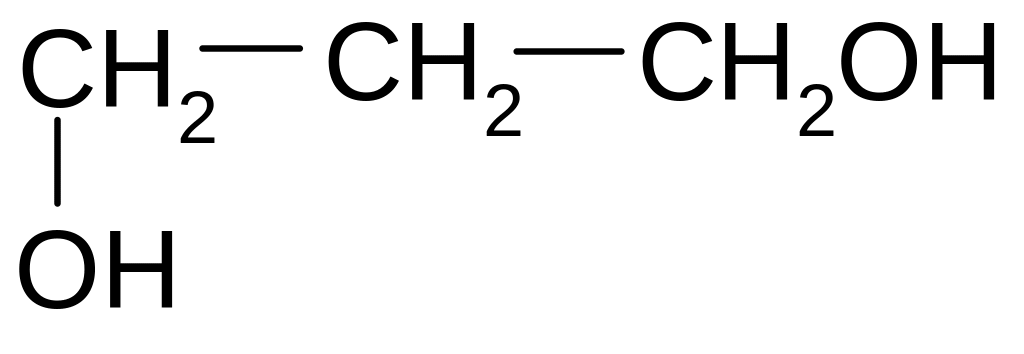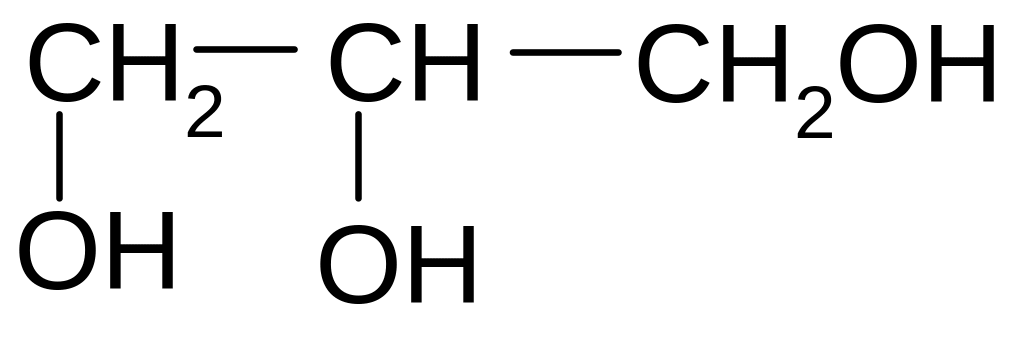
Examination tests of organic chemistry
Section I. Classification of organic compounds. Nomenclature. Isomerism
1. What is the name of the following compound according to the IUPAC nomenclature?

1) 2,3-dimethyl-5-ethylhexane
2) 2-ethyl-4 ,5-dimethylhexane
3) 3-methyl-5-propylhexane
4) 3,5,6-trimethylheptane
5) 2,3,5-trimethylheptane
2. What is the name of the following compound according to the IUPAC nomenclature?

3-methyl-4-propyl-3-hexene
2,3-diethyl-2-hexene
2,3-diethyl-3-hexene
3-methyl-4-ethyl-3-heptene
2-ethyl-3-propyl-2-pentene
What is the name of the following compound according to the IUPAC nomenclature
(CH3) 2CH - C(CH 3)2 - CH2 - CH3?
1) 2,3-dimethylpentane
2) 2.2 dimethylpentane
3) 3.3-dimethylpentane
4) 2,2,3-trimethylbutane
5) 2,3,3-trimethylpentane
4. What is the name of the following compound according to the IUPAC nomenclature

2,2-dimethyl-1-butene
3,3-dimethyl-1-butene
2,2-dimethyl-2-butene
3-metil-1-izopentene
3,3-dimethyl-2-butene
5. What is the name of the following compound according to the rational nomenclature?

1) ethylizobutylmethane
2) methylethylbutylmethane
3) propilizobutylmethane
4) izopropylbutylmethane
5) methylethylpropylmethane
6. What name is a compound according to the rational nomenclature?

1) dimethyldiethylmethane
2) dimethylethylpropylmethane
3) dimethylethylizopropylmethane
4) methyldiethylpropylmethane
5) triethylizopropylmethane
7. What name corresponds to a hydrocarbon radical?
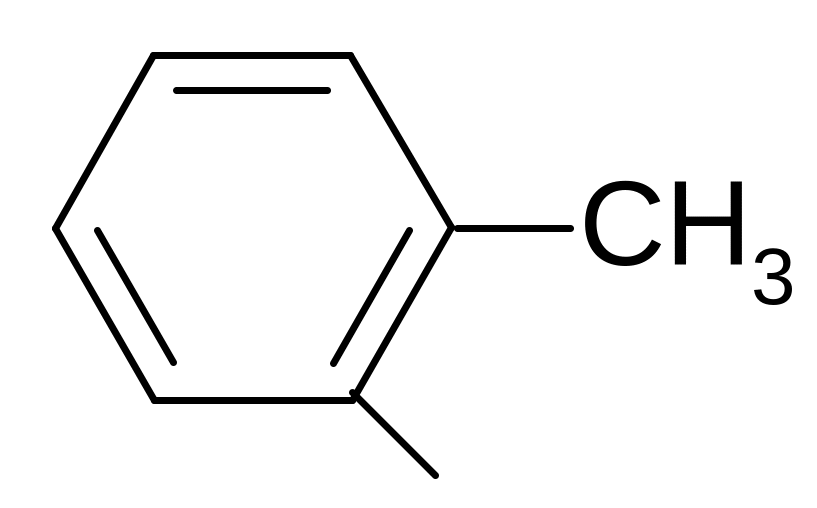
1) phenyl
2) benzyl
3) p-tolyl
4) o-tolyl
5) m-tolyl
8. What name corresponds to a hydrocarbon radical?
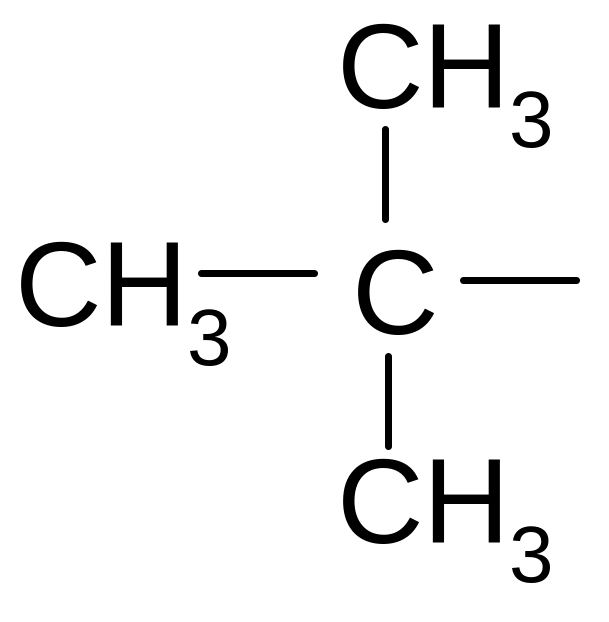
1) isobutyl
2) isopropyl
3) sec-butyl
4) tert-butyl
5) propyl
9. What name corresponds to a hydrocarbon radical?
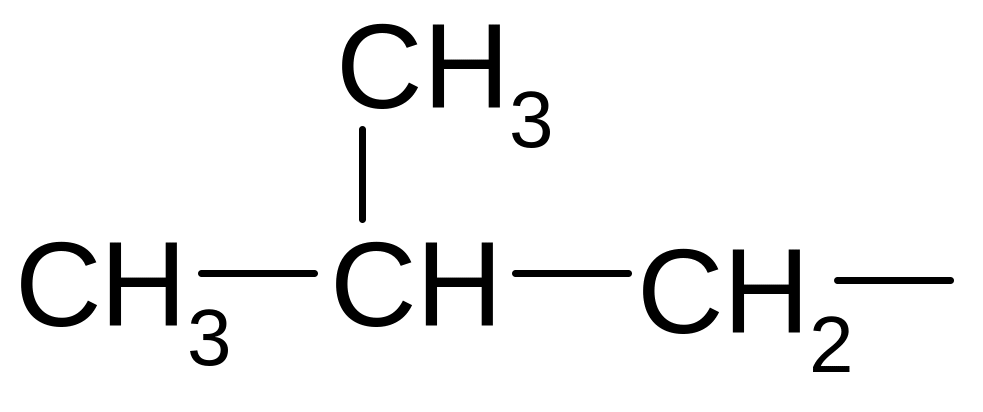
1) isobutyl
2) isopropyl
3) sec-butyl
4) tert-butyl
5) propyl
10. How many secondary carbon atoms are there in the compound?

2
3
4
5
6
11. What is the number of primary carbon atoms in the molecule 2,2-dimethylbutane?
1.
2.
3.
4.
5) 5.
12. Which class of organic compounds does this compound belong to?

1) ester
2) acid
3) ketone
4) aldehyde
5) ether
13. Which class of organic compounds does this compound belong to?

1) ketone
2) acid
3) aldehyde
4) ether
5) ester
14. Which class of organic compounds does this compound belong to?

1) Ester
2) Acid
3) Ketone
4) Aldehyde
5) Ether
15. Which class of organic compounds does this compound belong to?
СН3–СН2–О–СН2–СН3
1) Ester
2) Ether
3) Ketone
4) Aldehyde
5) Alcohol
16. What is the name of this compound?

1) 1,3 - dimethylbenzene
2) 1,4 - dimethylbenzene
3) ortho-dimethylbenzene
4) meta-dimethylbenzene
5) para-dimethylbenzene
17. Which name corresponds to p-aminosalicylic acid (PASA) (which is used as anti-tuberculosis drugs) according to the IUPAC nomenclature?
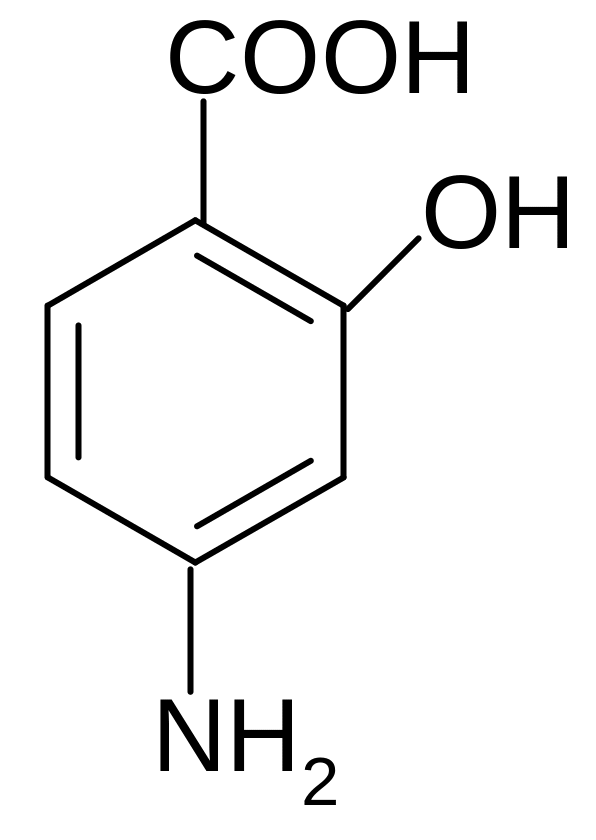
1) 2-hydroxy-4-aminobenzoic acid
2) 4-amino-2-hydroxybenzoic acid
3) 3-hydroxy-5-carboxybenzaldehyde
4) 5-amino-2- carboxyphenol
5) 2-carboxy-5-aminophenol
18. There are compounds С7Н14, С8Н18, С2Н2, С6Н6, С10Н22. How many of them are saturated hydrocarbons?
1) 5
2) 4
3) 3
4) 2
5) 1
19. Which of the following compounds corresponds to the radical сн2 сн – сн2 –
1) propylene
2) acetylene
3) butadiene
4) methylene
5) ethylene
20. Which of the following compounds corresponds to the radical С6Н5 –
1) phenol
2) benzene
3) toluene
4) cresol
5) xylene
21. Amino acid serine HO-CH2-CH(NH2)-COOH is a part of proteins. Which functional groups of the serine molecule is reflected in the title according to the IUPAC rules as a suffix?
hydroxy-
carboxy-
amino -
nitro -
oxo -
22. How do you call a hydrocarbon radical C6H5CH2 -?
1) phenyl
2) allyl
3)-propyl
4) benzyl
5) vinyl
23. How do you call a hydrocarbon radical сн2 сн – ?
1) benzyl
2) phenyl
3) allyl
4) vinyl
5) acyl
24. ISOMERS OF 1-BUTENE ARE
СН ≡ С – СН2 – СН3
СН3 – СН = СН – СН3
СН3 – С ≡ С – СН3
СН3 – СН2 – СН2 – СН3

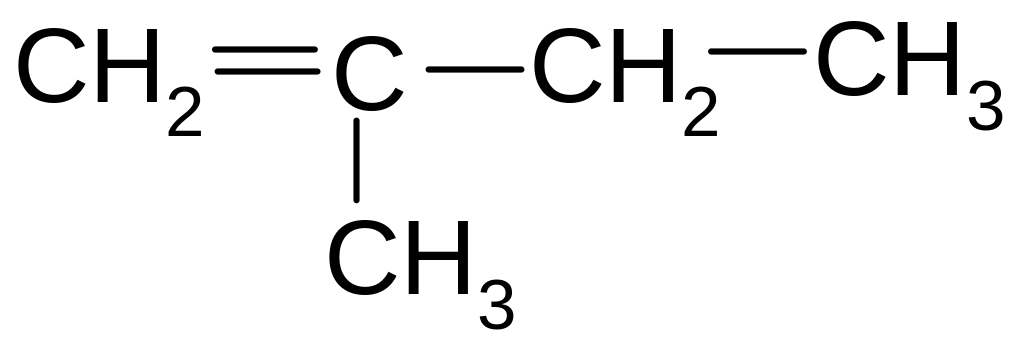
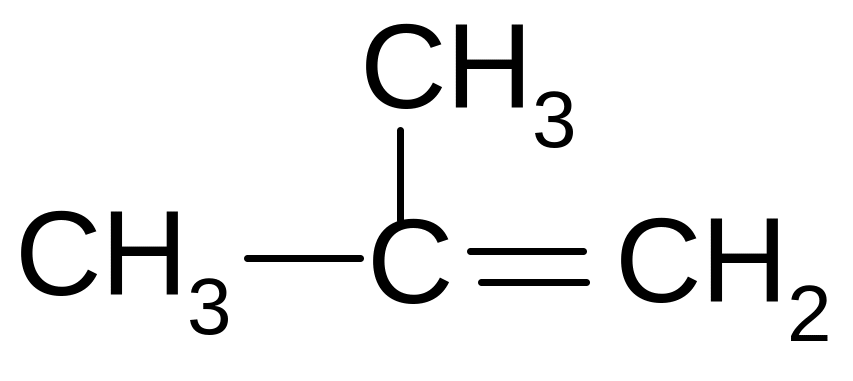


25. What is the name of benzene radical?
1) phenyl
2)benzyl
3) vinyl
4) allyl
5) methyl
26. RADICALS OF THE TOLUENE ARE
1) phenyl
2) benzyl
3) vinyl
4) allyl
5) methyl
6) tolyl
27. Which class of the following organic compounds does this compound belong to?
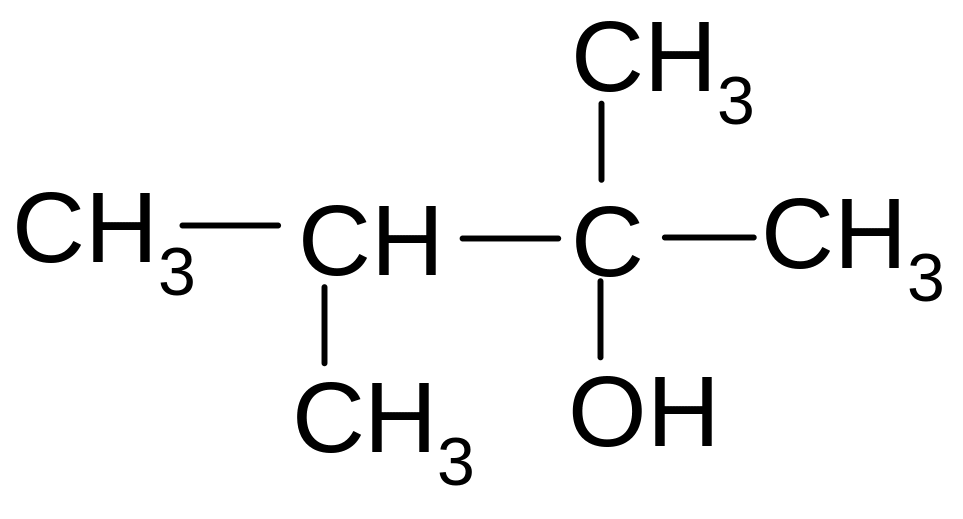
1) ester
2) ether
3) ketone
4) aldehyde
5) alcohol
28. What is the name corresponding to the hydrocarbon radical
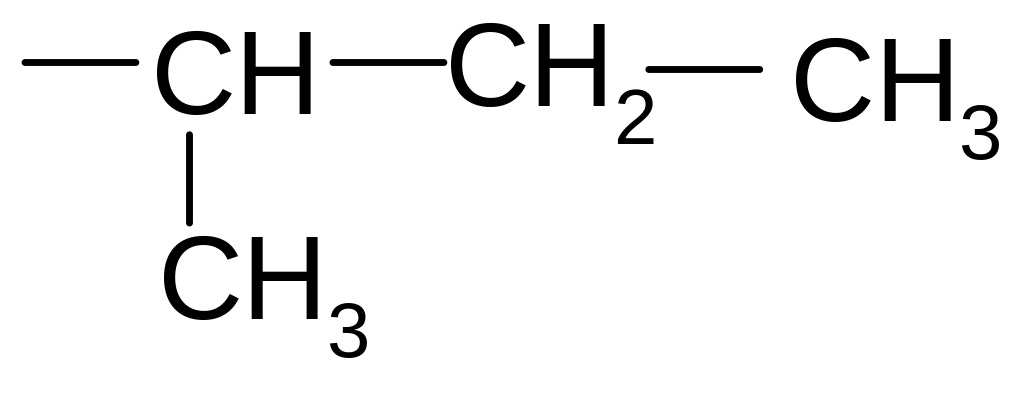
1) isobutyl
2) isopropyl
3) sec-butyl
4) tert-butyl
5) propyl
29. NAMES CORRESPOND TO THE STRUCTURAL FORMULAE FROM THE FOLLOWING ARE
1)
 2,3-dimethyl-3-butene
2,3-dimethyl-3-butene
2) 3-methyl-3-pentene
3-methyl-3-pentene
3)
 2-ethyl-1-butene
2-ethyl-1-butene
4)
 2-methyl-2-pentene
2-methyl-2-pentene
5)![]() 2,3-dimethyl-2-buthyne
2,3-dimethyl-2-buthyne
6)
2- methylpropane
30. What is the name corresponding to the hydrocarbon radical
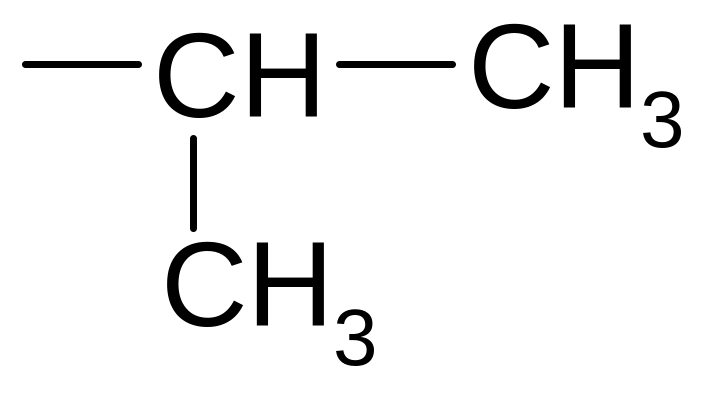
1) isobutyl
2) isopropyl
3) sec-butyl
4) tert-butyl
5) propyl
31. PEARS OF COMPOUNDS WHICH ARE STRUCTURAL ISOMERS
1) propene and propane
2) propene and propyne
3) butene-1 and butyne-2
4) propanone and propanal
5) propanol and methoxyethane
6) propane and 2-methylpropane
7) 1-propanol and 2-propanon
8) cyclohexane and methylcyclopentane
32. FUNCTIONAL GROUPS ARE
– СН = СН2
– СН = О
– СООН
– С ≡ N
– C2H5
– C6H5
– СH3
33. HYDROCARBON RADICALS ARE
– СН2 – СН = СН2
– С(О) –
– СООН
– С ≡ N
– C6 H5
– C3H7
– NH2
– OH
Section II. The mutual influence of atoms and ways of transfer in biologically important molecules. Classification by type of organic reactions and mechanisms. Reactivity of hydrocarbons. Radical substitution reaction. Electrophilic substitution reactions and addition.
1. Which product is formed by reduction of toluene?
1) methylcyclohexane
2) dimethylbenzene
3) benzaldehyde
4) methylbenzene
5) cyclohexane
2.
We have reaction CH3–СН2–СН3
+ Br2
![]() ?
Which of type, mechanism and final product of bromination reaction?
?
Which of type, mechanism and final product of bromination reaction?
1) SN, 1-bromopropane
2) SR, 1,3-dibromopropane
3) SE, 2,2 - dibromopropane
4) SN, 1,1-dibromopropane
5) SR, 2-bromopropane
3. Which electronic effect does a carboxyl group show in benzoic acid?
+ М, – I
– M, + I
– M, – I
+ M, +I
+ I
4. Which electronic effect does a nitro group show in the molecule СН2 = СН – NО2?
+M
–M
–I, +М
+I, +M
–I, –M
5. Which electronic effect does a NH2- group show in the aniline molecule?
+I, +М
–M
–I, –M
–I, +M
–I
6. Which electronic effect does an amino group show in the molecule CH2 = CH - NH2?
1) + M
2)-M
3)-I, + M
4) + I, + M
5)-I,-M
7. The hydroxyl group in phenol shows electron-donor properties. Which electronic effects does hydroxyl group show in phenol?
1) + M, - I
2) - M, + I
3) - M, - I
4) + M, + I
5) + I
8. Aldehyde group in benzaldehyde shows electron-acceptor properties. Which electronic effects are shown by the aldehyde group in benzaldehyde?
1) - M, + I
2) + M, - I
3) - M, - I
4) + M, + I
5) + I
9. What is the product of the reaction CH2=CH-CH3 + HCl →?
1-chloropropane
2-chloropropane
3-chloropropane
1,1-dichloropropene
2,2-dichloropropene
10. Which alcohol is formed by hydration of isobutylene in an acidic medium?
2-methyl-1-propanol
2-methyl-2-propanol
1-butanol
2-butanol
2-propanol
11. What electronic effects in the molecule of acrylic acid are marked correctly?
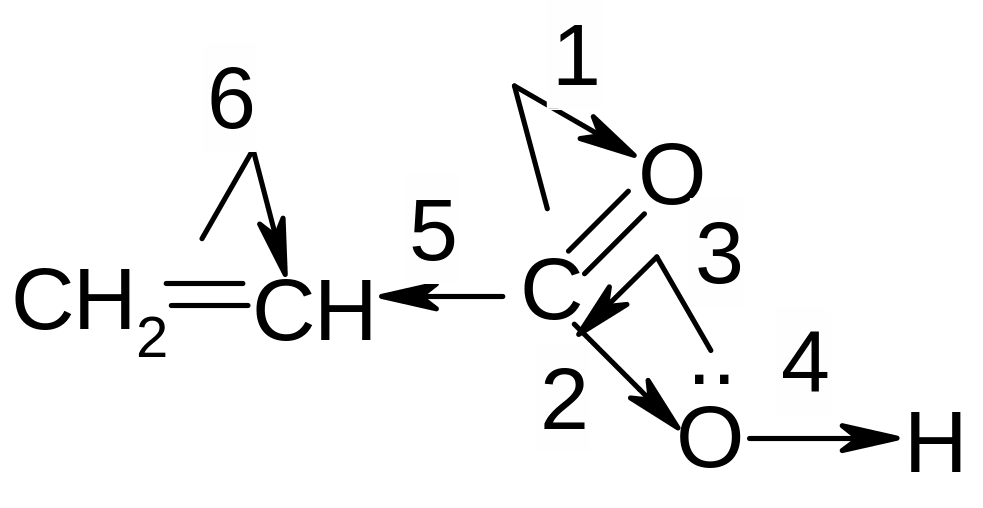
1) 1,2,4,6
2) 1,3,4,5
3) 1,2,3,6
4) 1,2,5,6
5) 2,4,5,6
12. What electronic effects in the molecule of benzaldehyde are marked correctly?
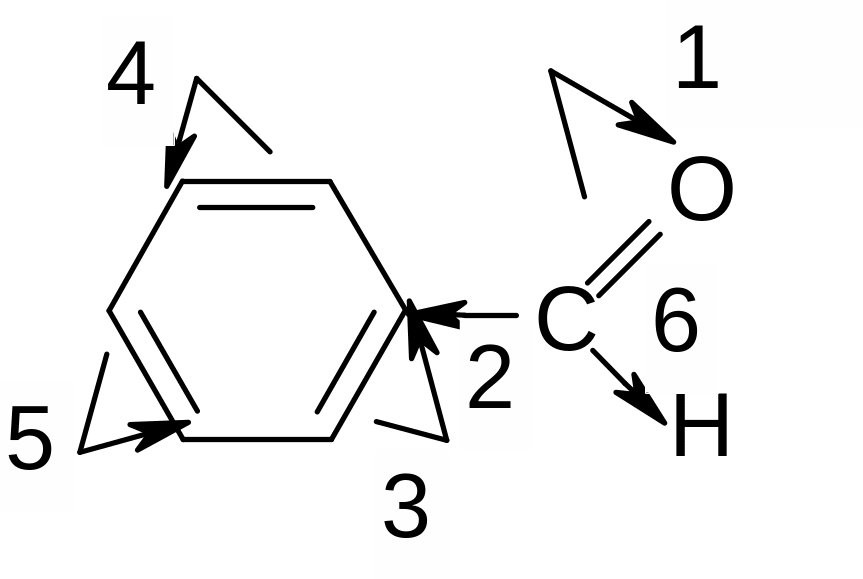
1,2,4,6
1,2,3,6
1,3,4,5
1,2,5,6
2,4,5,6
13. REAGENTS SOLUTIONS WHICH SHOULD BE ADDED TO THE SUBSTANCES TO PROVE THE EXISTENCE OF DOUBLE BONDS ARE
CH3COOH
Cu(OH)2
C6H5OH
КМnO4
NaOH
Br2
14. Hydrocarbon with the general formula С8Н8 discolours bromine water and oxidizes into aromatic acid. What is the name of this compound?
1) benzaldehyde
2) vinylbenzene
3) methylbenzene
4) toluene
5) phenol
15. Pair of compounds which can be distinguished by "silver mirror reaction" are
1) alcohol and aldehyde
2) ketone and ester
3) amine and acid
4) amide and ketone
5) aldehyde and aldehyde
16. What are type, mechanism and the final product of the reduction reaction of propene?
1) AE, propane
2) AE, propanol - 2
3) AN, propanol - 2
4) SN, propane
5) SE, propanal
17. TYPE, MECHANISM AND PRODUCTS OF THE REACTION OF PHENOL BROMINATION ARE
1) 2,4,6 - tribromophenol, SE
2) 2,4,6 – tribromophenol, SN
3) m - bromophenol, SE
4) o - bromophenol, SN
5) p - bromophenol, SЕ
6) 3,5-dibromophenol, SE
18. Which compound is formed by the oxidation of 2-butene with aqueous solution of KMnO4?
1) trihydric alcohol
2) dihydric alcohol
3) two molecules of carboxylic acid
4) two molecules of an aldehyde
5) two molecules of an alcohol
19. Which of the reactions represents the SR mechanism?
СН3 – СН = СН2 + Вr2 →
С6H6 + Н2SO4 →
CH2 = CH2 + HOH

CH4 + Br2
C6H5OH + Br2 →
20. Which of the reactions represents the SE mechanism?
CH3 – CH3+ Br2
CH2 = CH2 + Cl2 →
CH3 – CH = CH2 + HOH
CH2 = CH2 + HOH
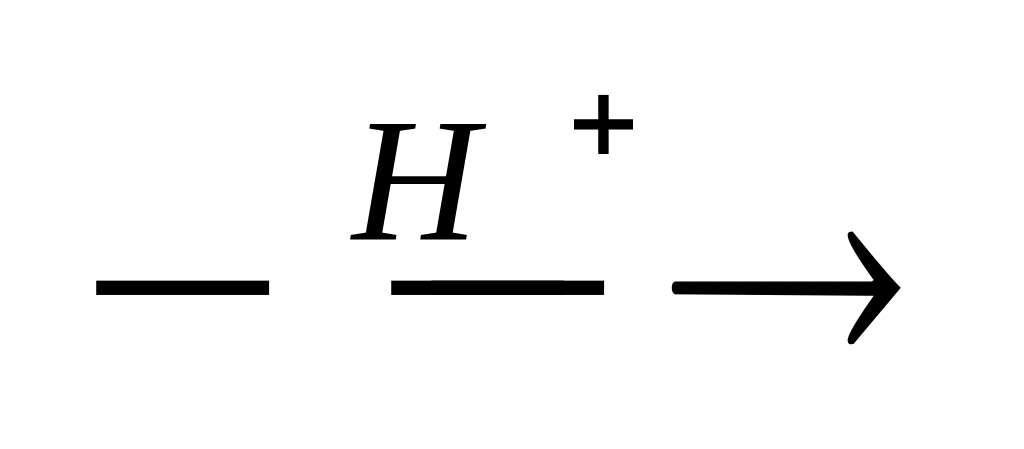
C6H5OH + Br2 →
21. Which of the reactions represents the AE mechanism?
C6H6 + HNO3 →
CH4 + Cl2
C6H5OH + Br2 →
CH3 – CH3+ Br2
CH3 – CH = CH2 + HOH
22. COMPOUNDS WHICH HAVE THE π, π-CONJUGATION ARE
СН2 = СН – Cl
СН2 = СН – NО2
СН3 – СН2 – ОН
СН3 – СН2 – О – СН3
СН2 = СН – СООН
СН2 = С(CH3) – СН = СН2
СН2 = СН – О – СН = СН2
23. COMPOUNDS WHICH HAVE THE p, π-CONJUGATION ARE
СН3 – СН2 – Cl
СН3 – СН2 – NH2
СН2 = СН – CН3
СН2 = СН – ОН
СН2 = С(CH3) – СН = СН2
СН2 = СН – О – СН = СН2
24. Which of the substituent in the benzene ring exhibits a positive inductive effect?
–NO2
–C2H5
–SO3H
–OC2H5
–СН=О
25. COMPOUNDS WHICH HAVE CONJUGATED BONDS ARE
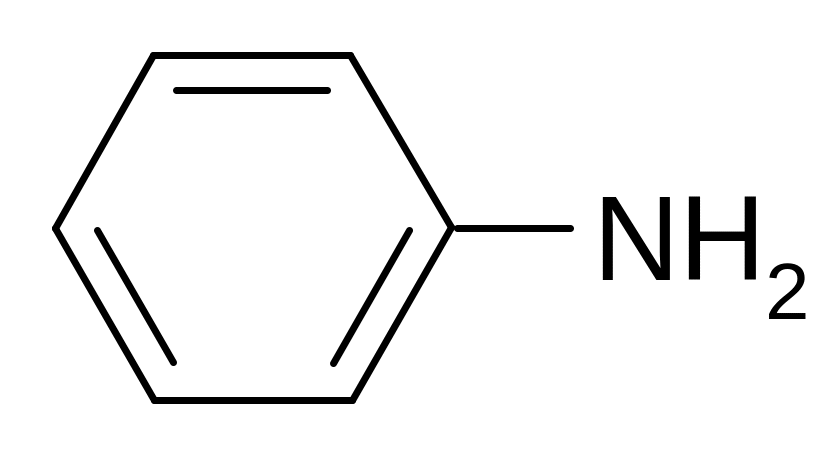
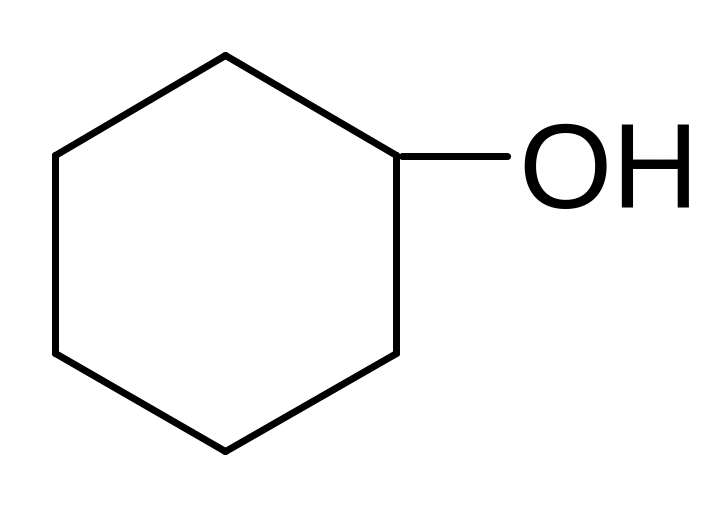
СН2 = СН – Cl
СН3 – СН2 – NН2

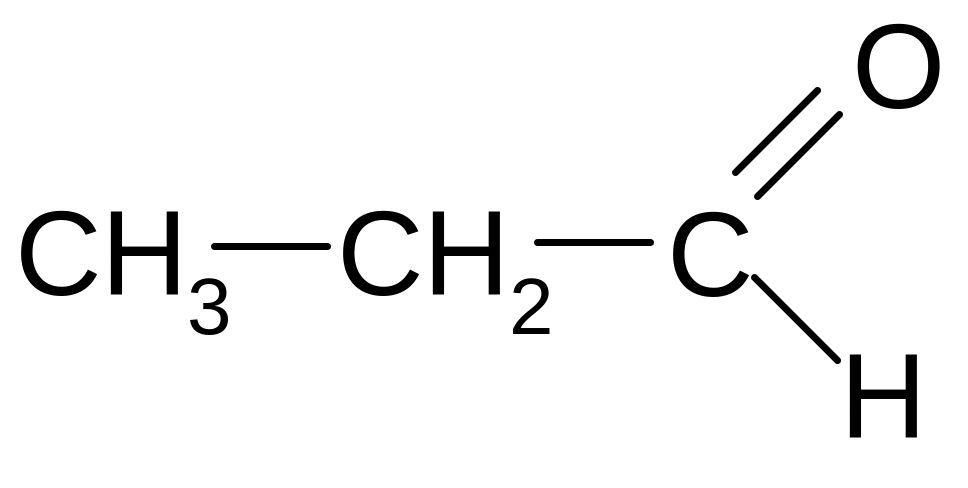
СН3 – СН2 – О – СН3
26. SUBSTITUENTS WHICH EXHIBIT A NEGATIVE INDUCTIVE AND NEGATIVE MESOMERIC EFFECTS (-I, -M) ON THE BENZENE RING ARE
–NН2
–C6H5
–SO3H
–C5H11
–OC2H5
–СН=О
–COOH
Section III. The acidity and basicity of organic compounds. Nucleophilic substitution at a saturated carbon atom.
1. Which type of acids does phenols belong to?
SH –
NH –
CH –
ОН –
РН –
2. Which type of acids does acetylene belong to?
РН-
SH-
NH-
СH-
ОH-
3. How do we call the base, which joins proton using the electron pair of the nitrogen atom, according to the Bronsted-Lowry theory?
сульфониевые основания
аммониевые основания
оксониевые основания
аммониевые кислоты
оксониевые кислоты
4. Which of these formulas corresponds to the name methylisopropylamine?
1)
![]()
2)
![]()
3)
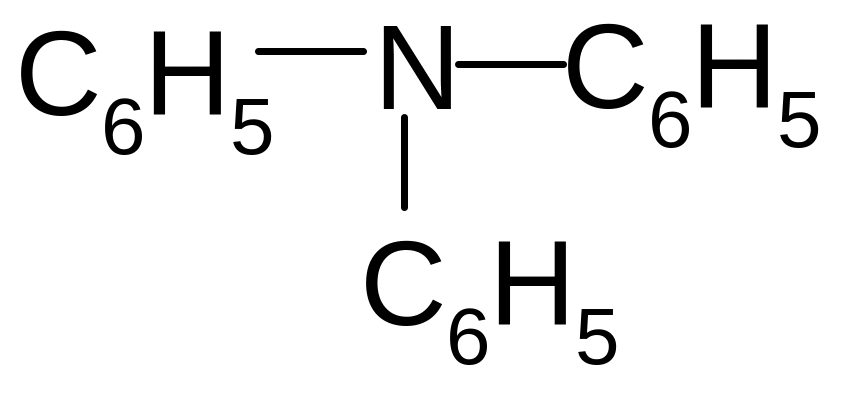
4)
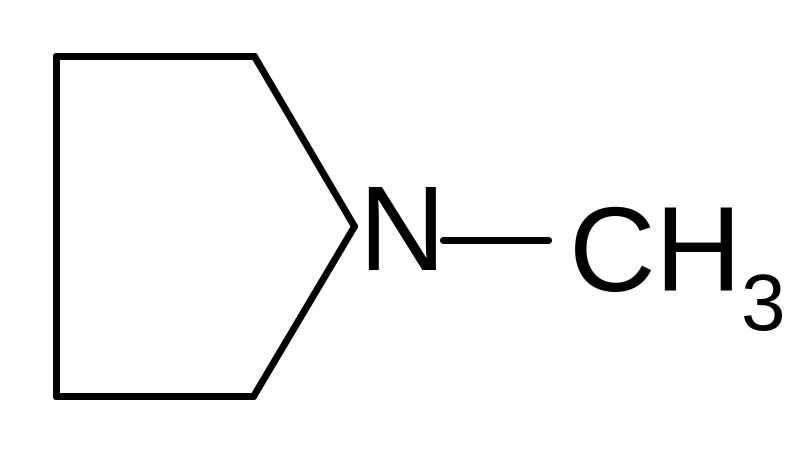
5)
![]()
5. Which of these formulas corresponds to the name the secondary propyl alcohol?
1)
![]()
2)
![]()
3)
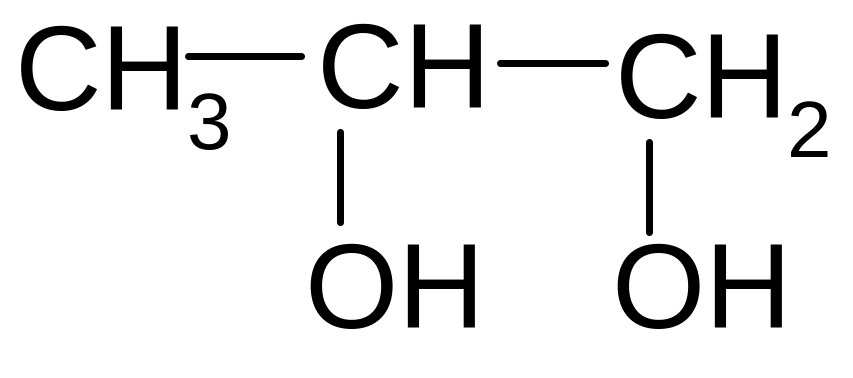
4)
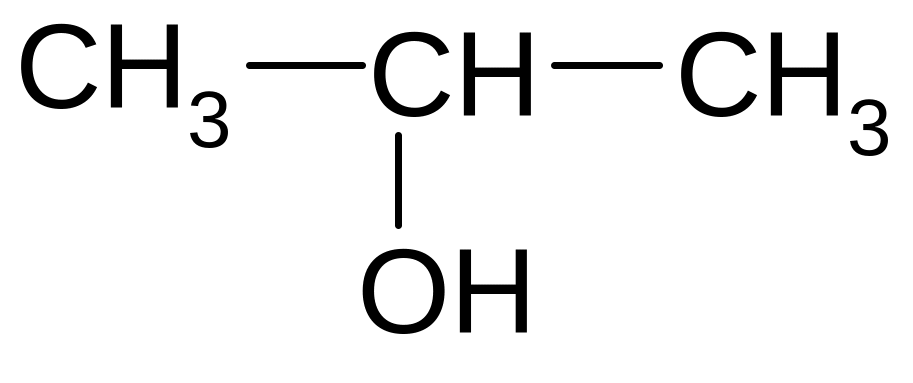
5)

6. Which product is formed by the reaction of intermolecular dehydration of ethanol?
1) diethylether
2) Acetaldehyde
3) Acetoacetic ester
4) Acetic acid
5) Ethylene
7. Which compounds are formed by interaction alcohol with a carbon acid?
1) Ether
2) Ester
3) aldehyde
4) acetale
5) ketone
8. Which of the following formulae corresponds to the product of oxidation of isopropyl alcohol?
1) CH3OCH3
2) CH3-CH = O
3) C2H5-CH = O
4) CH3-C(O)-CH3
5) CH2 (OH)CH2(OH)
9. Which of the following formulae corresponds to the product of oxidation of ethyl alcohol?
CH3OCH3
CH3–CН=О
C2H5–CН=О
CH3–C(О)–CH3
5) СH2(OH)CH2(OH)
10. Which compound is formed by oxidation of (СН3)2СНСН(ОН)СН3?
3-methyl-2-pentanone
3-methyl-2-pentanol
3-methyl-2-butanone
methylpropylketone
2-pentanone
11. Which are the type and mechanism of this reaction CH3CH2 COOH + CH3CH2OH?
1) Nucleophilic substitution
2) radical substitution
3) electrophilic substitution
4) elimination
5) nucleophilic addition
12. REAGENTS WHICH ARE USED TO DISTINGUISH BETWEEN PHENOL AND 2-PROPANOL ARE
Na
HCl
FeCl3
CuSO4
KMnO4
Вr2, Н2О
13. Which compound is formed by the reaction of CH3-CH(OH)-CH3 + NAD+ →?
1) Propane
2) propene
3) propyne
4) propanone
5) propanal
14. Which compound is formed by the reaction of СН3 – СН2 – СН2 – ОН + НАД+ →?
1) Propane
2) Propene
3) Propanone
4) Propanal
5) propanediol
15. Xylitol is pentahydric alcohol; it is used as a substitute for sugar in diabetes. Which of the reagents must be added in order to prove the existence of a diol fragment of xylitol?
1) Copper hydroxide (II)
2) Copper hydroxide (I)
3) nitrous acid
4) sodium hydroxide
5) bromine water
16. The first antidote for poisoning by arsenic was proposed 2.3-dimerkaptopropanol. What acidic centers in the antidote molecule involved mainly in the formation of arsenic salts?
SH–
CH–
ОН–
РН–
NH–
17. POLYATOMIC ALCOHOLS ARE
1) ethylene glycol
2) glycerol
3) methanol
4) ethanol
5) toluene
6) phenol
18.Which compound is formed by the oxidation of primary alcohols?
1)ketone
2) aldehyde
3) acetal
4) glycoside
5) ether
19. Which compound is formed by the oxidation of secondary alcohols?
1) ketone
2) aldehyde
3) acetal
4) hemiacetal
5) ether
20. REACTIONS OF ETHER FORMATION ARE
CH3CH2CH2 OH + CH3CH2 OH
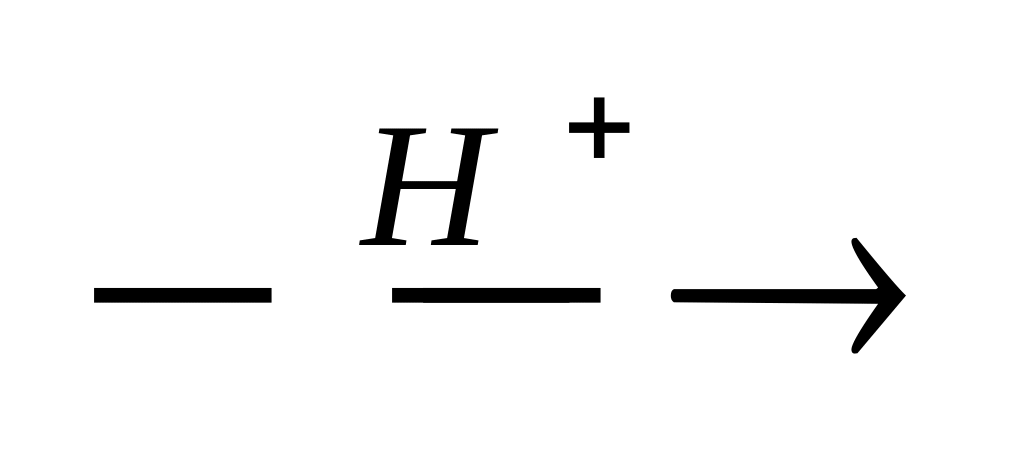
CH3CH2 COOH + CH3CH2 OH
CH3 CH=O + CH3 CH2 CH2 OH
CH3 CH=O + 2 CH3 CH2 CH2 OH
CH3 OH + CH3 OH
CH3CH=O + HOH →
21. REACTIONS OF ESTER FORMATION ARE
CH3CH2CH2 OH + CH3CH2 OH
CH3CH2 COOH + CH3CH2 OH
CH3CH=O + CH3 CH2 CH2 OH
CH3CH=O + 2 CH3 CH2 CH2 OH
CH3 OH + Н COOH
CH3CH=O + HOH →
22. Which of the following acids is the most strong?
рКа = 10,2
рКа = 7,1
рКа = 3,8
рКа = 4,8
рКа = 4,9
23. What is the product of weak oxidation of 1-propanethiol
CH3 CH2 CH2 – S – S – CH2 CH2 CH3
CH3 CH2 CH2 SO2 СH2 CH2 CH3
CH3 CH2 – S – S – CH2 CH3
CH3 SO2 CH2 CH2 CH3
CH3 CH2 CH2 SO3H
24. Which of the following reactions gives 2-propanol as a product?
CH3 CH = CH2 + HOH + KMnO4 →
CH3 CH2 CH = O + Н2 →
CH3 C(O) CH3 + H2 →
CH3 CH(OH) CH2 CH3 + [O] →
CH3 CH(ОН) CH3 + [O] →
25. COMPOUNDS WHICH ARE CAPABLE OF REACTING WITH AN AQUEOUS ALKALINE SOLUTION ARE
CH3NH2
CH3OH
C6H5OH
C6H5 CH2 SH
C6H5 CH2 OH
CH3 CH2 SH
CH3–CH2–CH2OH
Section IV. The reactivity of carbonyl compounds in nucleophilic reactions.
1. What is the formula of oxalic acid?
НООС – СН2 – COOH
НООС – (СН2)3 – COOH
НООС – (СН2)2 – COOH
НООС – COOH
НООС – (СН2)4 – COOH
2. What is the formula of succinic acid?
НООС – СН2 – COOH
НООС – (СН2)3 – COOH
НООС – (СН2)2 – COOH
НООС – COOH
НООС – (СН2)4 – COOH
3. Which compound is formed by the interaction of acid with ammonia?
1) hemiacetal
2) anhydride
3) acetal
4) amide
5) ether
4. What functional group is found both in aldehyde and ketone?
nitro- group
amino- group
oxo- group
carboxy- group
hydroxyl- group
5. Which acid is formed by hydrolysis of C4H9C(O)OC2H5?
1) Hexanoic acid
2) valeryanic acid
3) isovaleryanic acid
4) propionic acid
5) acetic acid
6. Which of these structures is the product of reduction of propenal?
7. REAGENTS WHICH ARE USED TO DISTINGUISH BETWEEN PROPANONE AND PROPANAL ARE
1) nitrous acid
2) bromine water
3) copper hydroxide (I)
4) copper hydroxide (II)
5) sodium hydroxide solution
6) solution of potassium permanganate
7) an ammonia solution of silver hydroxide
8. What substance is formed by the reaction of HBr with propenoic acid?
1) propanoic acid
2) 2-brompropanoic acid
3) 3-brompropanoic acid
4) bromoanhydride of acetic acid
5) bromoanhydride of 3-brompropanoic acid
9. What are the type, the mechanism and final product of the reaction
2R–OH + R–CH=O ?
1) SN, ester
2) AN, hemiacetal
3) SN, amide
4) AN, aldol
5) AN, acetal
10. What are the type, the mechanism and final product of the reaction
R–CH=O + R–CH=O ?
1) SN, ester
2) AN, hemiacetal
3) SN, amide
4) AN, aldol
5) AN, acetal
11. The compound СН3СН2СН(ОН)СН(СН3)СН = О was formed as a result of the aldol addition. Which of the following aldehydes took part in the reaction?
butanal
propanal
2-ethylpropanal
2-methylpropanal
2,2-dimethylpropanal
12. Which of the following reactions gives ethylpropanoate as a product?
C3H7 OH + C2 H5OH
CH3 CH2 COOH + C2 H5OH
CH3 CH2 CH = O + C2H5 OH
CH3 CH2 COOH + Cl2
CH3 CH = CH2 + H2
13. The crystals of calcium oxalate in urine appear in certain pathological conditions. What reagent can detect the presence of oxalic acid?
calcium chloride solution
ammonium hydroxide solution of silver
a solution of potassium permanganate
a solution of bromine water
Fehling's reagent
14. Which of the following compounds gives 1-butanol as a product of the reduction reaction?
1) butanal
2) butanone
3) butanol
4) butyl
5) butane
15. Which of the following acids is the weakest?
1) acetic
2) formic
3) trichloroacetic
4) dichloroacetic
5) chloroacetic
16. What reagent can be used to get formic acid from formaldehyde?
ethylamine
potassium hydroxide
copper (II) hydroxide
FeCl3 solution
nitrous acid solution
17. COMPOUNDS WHICH WILL REACT WITH PHOSPHORIC ACID TO FORM ESTER ARE
1) ethanol
2) glycerol
3) acetic acid
4) acetaldehyde
5) phenol
6) acetone
7) benzene
18. What is the formula of methyl acetate?
СН3 СН2 СООСН2 СН3
СН3 СООСН2 СН2 СН3
СН3 СН2 СООСН2 СН2 СН3
СН3 СОСН2 СН2 СН3
СН3 СООСН3
19. REACTIONS OF HEMIACETAL FORMATION ARE
2CH3 OH + H2C = O →
(CH3)2 CHOH + CH3 OH →
CH3 CH2 OH + CH3 CH = O →
CH3 CH2 CH = O + CH3 CH = O →
(CH3)2 CH CH = O + CH2=O →
CH2=O + CH3 CH2 OH →
20. Which pair of interacting compounds leads to the formation of aldol?
СH3 OH + CH3 OH
СH3 CH=O + CH3 OH
2СH3 OH + CH3 CH = O
СH3 CH = O + CH3 CH = O
СH3 CH = O + HOH
21. What compound is formed by esterification reaction of methyl alcohol with propionic acid?
СН3СН2СН2СООС3Н7
СН3СООСН2СН2СН3
СН3СН2СН2ОСН2СН3
СН3СН2СООСН3
СН3СН2СОСН2СН3
22. REACTIONS WHICH HAVE THE MECHANISM AN ARE
CH2 = CH2 + Cl2 →
CH3 – CH2 – COOH + C2H5OH →
H-CH=O + C2H5OH →
CH3 – COOH + NH3 →
CH3COOH + Cl2 →
CH3C(O)CH3 + H2 →
CH3 – CH2 – CH = O + Н2О →
23. REAGENTS WHICH CAN BE USED FOR THE CONVERSION OF ETHANOL TO ACETIC ACID ARE
1) methylamine
2) sodium hydroxide
3) potassium permanganate
4) copper (II) hydroxide
5) copper (I) hydroxide
6) lithium borogidrit
7) metallic sodium
Section V. Heterofunctional connections involved in the processes of life.
1. Which formula is glycine (aminoacetic acid)?
СН3 – СН(NН2) – СООН
NН2 – СН2 – СН2 – ОН
NН2 – СН2 – СН2 – СООН
NН2 – СН2 – СООН
СН3 – СН(ОН) – СН2 – NН2
2. Which of these formulas corresponds to glutamic acid (2-aminopentandioic acid) in the form of bipolar ion?
1)

2)

3)

4)

5)

3. How many asymmetric carbon atoms are present in the following compound
(СН3)2СН–СН(Br)–CН(Br)–СООН?
0
1
2
3
4
4. What is the formula of alanine (α-aminopropionic acid)?
NН2 – СН2 – СН2 – ОН
NН2 – СН2 – СН2 – СООН
NН2 – СН2 – СООН
СН3 – СН(NН2) – СООН
СН3 – СН(ОН) – СН2 – NН2
5. What is the name of the following aminoacid?

1) Alanine (- aminopropionic acid)
2) valine ( - aminoizovalerianic acid)
3) leucine (- aminoizokapronic acid)
4) glycine (amino-acetic acid)
5) isoleucine ( - amino - - methylvaleric acid)
6. What is the name of the following amino acid?

1) glycine (aminoetanoic acid)
2) alanine (2-aminopropanoic acid)
3) valine (2-amino-3-methylbutanoic acid)
4) leucine (2-amino-4-methylpentanoic acid)
5) isoleucine (2-amino-3-methylpentanoic acid)
7. Which of the following -aminoacids forms disulfide bond by oxidation reaction?
1) Methionine (-amino--methylthiobutyric acid)
2) Cysteine (-amino--tiopropionic acid)
3) Alanine ( - aminopropionic acid)
4) Aspartic (aminosuccinic acid )
5) Valine (- aminoizovalerianic acid)
8. Which product is formed by the interaction of glyoxylic acid O = CH-COOH with silver oxide in solution of ammonia hydroxide?
1) Glyoxalic acid
2) oxalic acid
3) Acetic acid
4) malonic acid
5) Glycolic Acid
9. What is the structure of the product formed by the reaction of deamination of valine (α-aminoisovalerianic acid) with HNO2?
(CH3)2CH – CH(OH) – COOH
(CH3)2 C = CH – COOH
HO – CH2 – CH(OH) – COOH
HO – CH2 – CH2 – CH2 – COOH
HO – CH2 – CH2 – COOH
10. What structure of the product formed by the deamination of alanine (α-aminopropionic acid) HNO2?
1)![]()
2)
![]()
3)
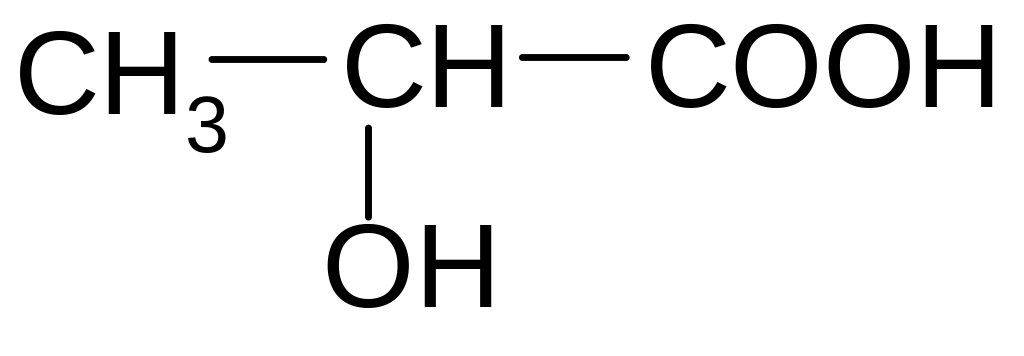
4)

5)
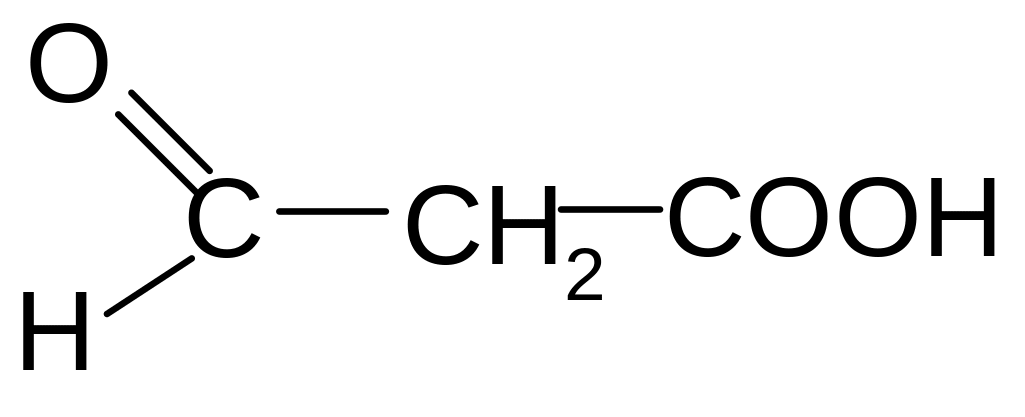
11. Which amino acids are formed during the acid hydrolysis of the tripeptide given follow?

1) alanine, leucine, valine
2) valine, isoleucine, alanine
3) isoleucine, valine, alanine
4) leucine, valine, alanine
5) valine, leucine, alanine
12. What are the amino acids present in the following peptide?
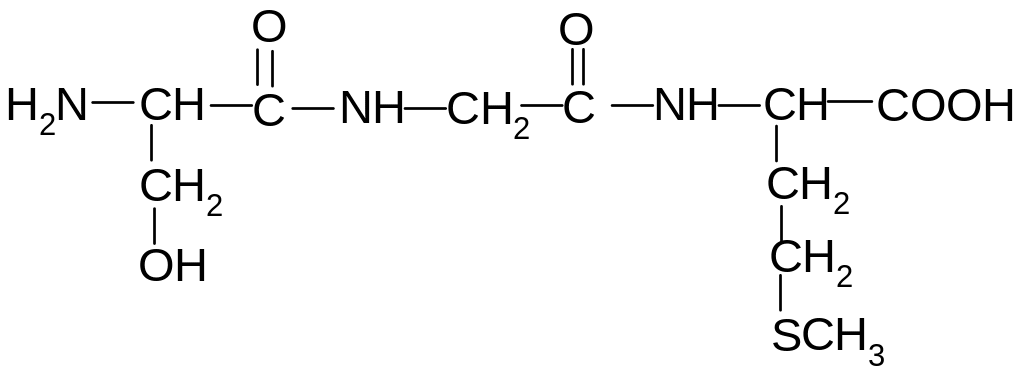
1) methionine, glycine, serine
2) serine, glycine, methionine
3) glycine, methionine, serine
4) serine, methionine, glycine
5) methionine, serine, glycine
13. What are the amino acids present in the following peptide?
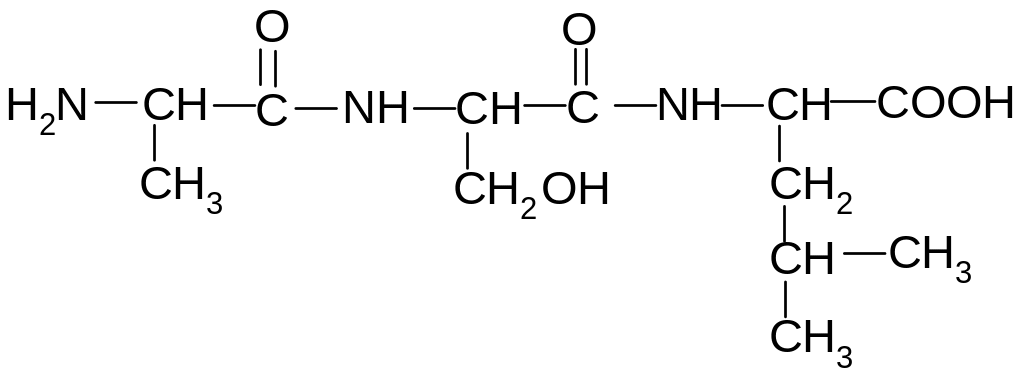
1) alanine, glycine, valine
2) glycine, serine, valine
3) alanine, serine, leucine
4) valine, serine, isoleucine
5) alanine, serine, valine
14. Identify the composition of this peptide?

1) Asp-Ala-Ser
2) Gly-Ser-Glu
3) Phe-Gly-Cis
4) Asp-Gly-Cis
5) Ser-Gly-Val
15. Which amino acids are formed during the acid hydrolysis of the following peptide?

1) alanine, glycine, phenylalanine
2) glycine, phenylalanine, alanine
3) phenylalanine, alanine, glycine
4) glycine, alanine, phenylalanine
5) phenylalanine, glycine, alanine
16. Which α-amino acid forms butendioic acid HOOC-CH=CH-COOH as a result of non-oxidative deamination?
1) glutamic acid (α-aminopentanedioic acid)
2) leucine (α-aminoisocaproic acid)
3) aspartic acid (α-aminosuccinic acid acid)
4) methionine (α-amino-γ-methylthiobutyric acid)
5) phenylalanine (α-amino-β-phenylpropionic acid)
17. Which α-amino acid form pyruvic acid (2-oksopropanoic acid) due to oxidative deamination?
1) Valine (α-aminoisovalerianic acid)
2) Methionine (α-amino-γ-methylthiobutyric acid)
3) Serine (α-amino-β-hydroxypropionic acid)
4) alanine (α-aminopropionic acid)
5) Phenylalanine (α-amino-β-phenylpropionic acid)
18. What is the product of the following reaction?

1) α-hydroxybutyric acid
2) β-hydroxybutyric acid
3) γ-hydroxybutyric acid
4) γ-butirolaktam
5) γ-lactone
19. What product is formed by the following reaction?

СН3СН2СООН
СН3СН(ОН)СООН
СН2=СН-СООН
О=СН-СООН
СН3СН2СН2ОН
20. Which of the forms of alanine will prevail at pH = 12?
 2)
2)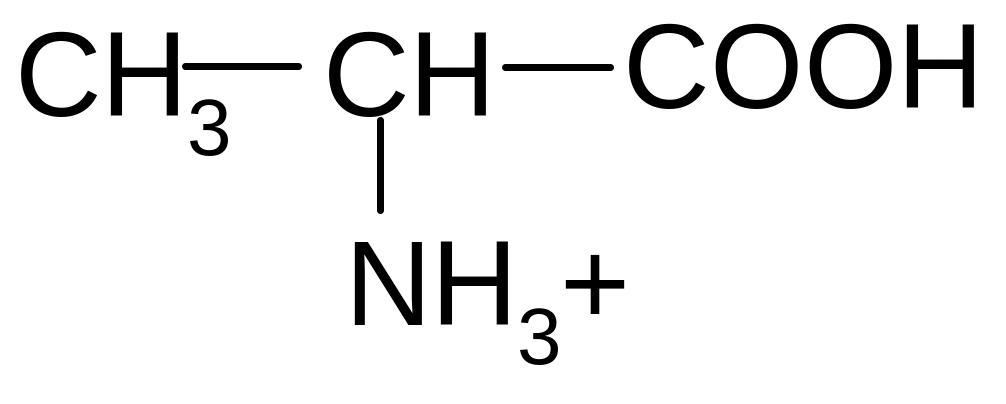 3)
3)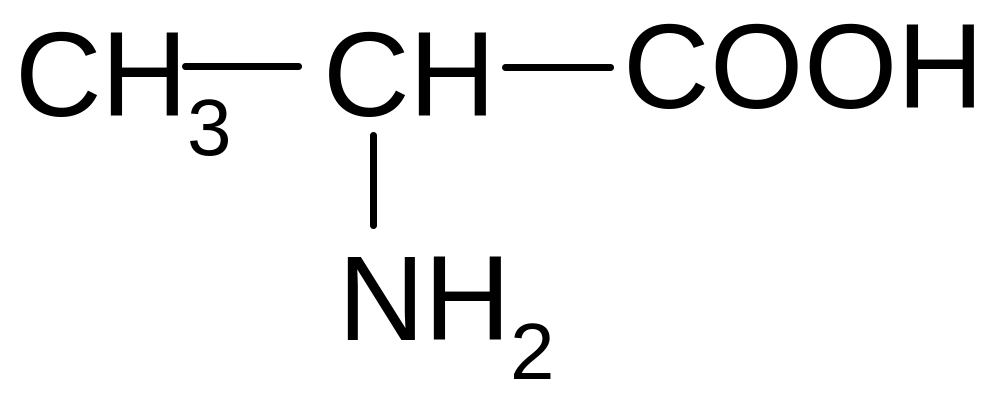
4) 5)
5)
21. Which of the forms of valine will prevail at pH = 2?
 2)
2) 3)
3)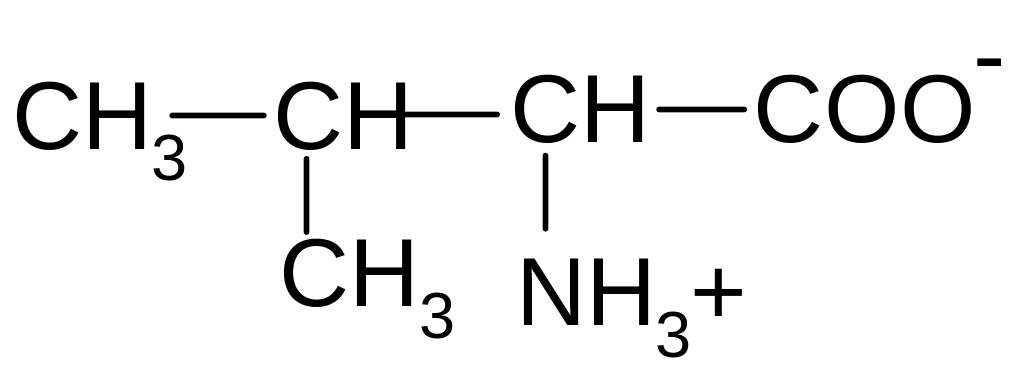
4)
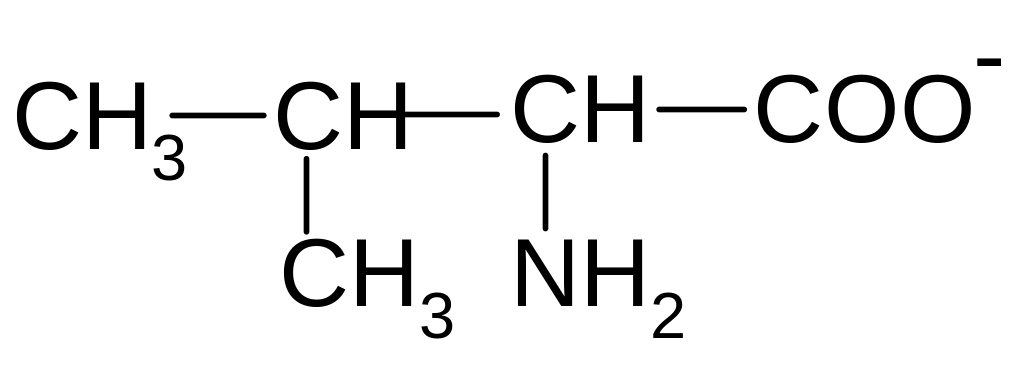 5)
5)
22. Tyrosine (p-hydroxyphenylalanine) participates in the acylation reaction. Which reagent can carry out this reaction?
СН3 СН=О
(СН3СО)2О
CH3 С(О) CH3
СН3 C(O) O СН3
(СН3 С(О) СН2 СI
23. REAGENTS WHICH CAN CARRY OUT REACTION OF ESTER FORMATION WITH THREONINE (2-AMINO-3-HYDROXYBUTANOIC ACID)
FeCl3
H3PO4
NaOH
KMnO4
Сu(OH)2
СН3СООН
24. The liquid in a test tube when heated with ninhydrin gets violet color. What substance is present in the test tube?
1) protein
2) vitamin
3) nucleotide
4) coenzyme
5) polysaccharide
25. Methionine is used for treatment of diseases of the liver. Isoelectric point of methionine is 5.8. What ionic form of methionine is present in saliva (рН of the saliva is equal to 6.35)?
1) cation
2) anion
3) neutral
4) radical
5) electroneutral
26. Which of the following α-aminoacids gives γ-aminobutyric acid after decarboxylation?
1) Glutamic acid
2) aspartic acid
3) lysine
4) arginine
5) leucine
27. What is the common name of the CH3CH(OH)COOH?
1) salicylic acid
2) lactic acid
3) glycolic acid
4) oxalic acid
5) pyruvic acid
28. HEATING RESULTS IN THE DIPEPTIDE FORMATION FOR THE ACIDS
1) 2-hydroxypropanoic
2) 3-hydroxypropanoic
3) 4-aminobutanoic
4) 3-hydroxy-2-methylpropanoic
5) aminoethanoic
6) 2-amino-3-hydroxypropanoic
29. STATEMENTS WHICH CHARACTERIZE THE STRUCTURE AND PROPERTIES OF THE SERINE (Α-AMINO-Β-HYDROXYPROPIONIC ACID) ARE
1) relates to diaminomonocarboxylic acids
2) related to essential α-amino acids
3) forms an ester with phosphoric acid
4) relates to heterocyclic α-amino acids
5) forms ethanolamine after decarboxylation
6) forms pyruvic after oxidation
30. ESSENTIAL α-AMINO ACIDS ARE
1) serine
2) lysine
3) glycine
4) proline
5) tyrosine
6) isoleucine
7) tryptophan
8) phenylalanine
9) cysteine
31. STATEMENTS THAT CORRESPOND TO THE STRUCTURE AND PROPERTIES OF PHENYLALANINE ARE
1) has amphoteric properties
2) relates to a basic amino acids
3) forms tyrosine after hydroxylation
4) does not belong to essential α-amino acids
5) forms an ester with phosphoric acid
6) refers to heterocyclic α-amino acids
Section VI. Monosaccharides. Disaccharides. Polysaccharides.
1. How many chiral carbon atoms are present in glucose?
1) 1
2) 2
3) 3
4) 4
5) 5
2. How many number of stereoisomer ketohexose has?
1) 8.
2) 16.
3) 12.
4) 24.
5) 18.
3. EPIMERS OF GLUCOSE ARE
1) deoxyribose
2) galactose
3) fructose
4) mannose
5) xylose
6) ribose
4. Which oxidant transforms aldose into aldaric acid?
1) Copper oxide
2) Bromine water
3) Copper sulfate
4) nitric acid
5) copper hydroxide
5. Which product is formed by oxidation of glucose with bromine water?
1) Glucaric acid
2) Glikonoic acid
3) Gluconic acid
4) hyaluronic acid
5) glucuronic acid
6. What is the name of the given structure?
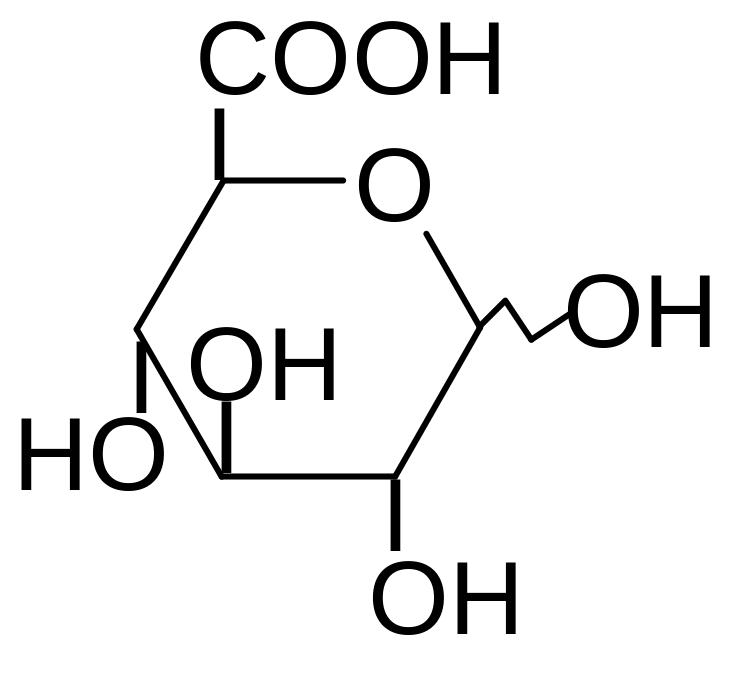
1) hyaluronic acid
2) Glucuronic acid
3) Galacturonic acid
4) mannuronic acid
5) pentanoic acid
7. What is the name of the given structure?

1) D-galactose
2) D-fructose
3) D-mannose
4) D-glucose
5) D-xylose
8. What is the name of the given structure ?

1) D-mannose
2) D-galactose
3) D-glucose
4) D-fructose
5) D-gluconic acid
9. Which monosaccharide in oxo-form corresponds to the structure of the cyclic hemiacetal? What is the name of the given structure?

1) α-D-fructofuranose
2) β-D-galactofuranose
3) β-D-fructofuranose
4) β-D-ribofuranose
5) α-D-xylofuranose
10 Which kind of glycosidic linkages present in amylopectin are absent in amylose?
1) α-1, 4
2) α-1, 2
3) α-1, 6
4) β - 1, 4
5) β - 1, 3
11. Which monosaccharides form sucrose by condensation?
1) α-D-glucopyranose + α-D-glucopyranose
2) α-D-glucopyranose + β-D-fruktofuranose
3) β-D-galactopyranose + α-D-glucopyranose
4) α-D-glucopyranose + β-D-glucopyranose
5) β-D-glucopyranose + α-D-glucopyranose
12. Which monosaccharides form lactose by condensation?
1) α-D-galactopyranose + α-D-glucopyranose
2) α-D-glucopyranose + β-D-fruktofuranose
3) β-D-galactopyranose + α-D-glucopyranose
4) α-D-glucopyranose + β-D-glucopyranose
5) β-D-glucopyranose + α-D-glucopyranose
13. Which compound is formed by the following reaction?
D-fruktofuranoza
+ ethanol![]()
1) ethyl-α-D-fructofuranose
2) ethyl-β-D-fructofuranose
3) ethyl-1,3,4,6-tetra-O-ethylfuranozid
4) ethyl-α-D and ethyl-β-D-fructofuranoside
5) 1,3,4,6-tetra-O-ethyl-β-D- fructofuranoside
14. Which of the following reagent can be used to distinguished sucrose from maltose?
1) iodide
2) dimethyl sulfate
3) acetic anhydride
4) nitrous acid
5) Fehling's reagent
15. Which stereoisomer is α-D-glucopyranose to the α-D-mannopyranose?
1) tautomer
2) anomer
3) epimer
4) racemate
5) enantiomer
16. What of the following products are formed by the hydrolysis of methyl-α-D-glucopyranoside in acidic medium?
1) Methanol and glucose
2) Methylamine and glucose
3) Methanol and methylglycoside
4) Methane acid and glucose
5) methanol and gluconic acid
17. What disaccharide consists of two residues α-D-glucopyranose units linked α(1→4) - glycosidic linkage?
1) Cellobiose
2) Maltose
3) Sucrose
4) Amylose
5) Lactose
18. Which compounds are formed of hydrolysation of maltose?
1) Glucose and mannose
2) Glucose and fructose
3) Galactose and glucose
4) Galactose and fructose
5) 2 molecules of glucose
19. Which of the following monosaccharides are formed by the hydrolysis of lactose?
1) 2 molecules of glucose
2) galactose and fructose
3) galactose and glucose
4) glucose and fructose
5) glucose and mannose
20. Which monosaccharides are formed by hydrolysis of sucrose?
1) 2 molecules of glucose
2) Glucose, galactose
3) Glucose, mannose
4) glucose, fructose
5) galactose, mannose
21. What are the components of the disaccharide fragment of hyaluronic acid?
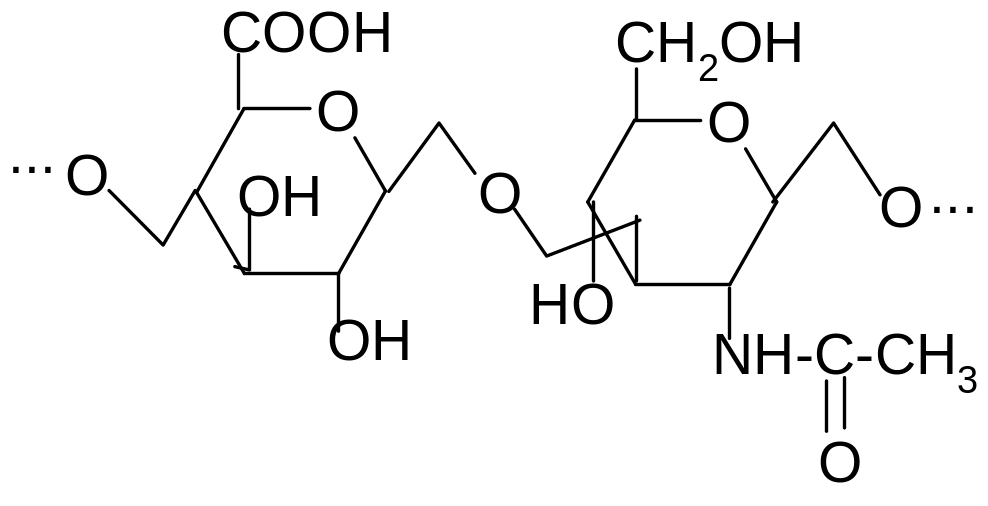
1) D-glucuronic acid and N-acetyl-D-glucosamine
2) D-glucuronic acid and N-acetyl-D-galactosamine-6-sulfate
3) D-glucuronic acid and N-acetyl-D-galactosamine-4-sulfate
4) D-galacturonic acid and N-acetyl-D-glucosamine
5) D-glucuronic acid and N-acetyl-D-mannosamine
22. What product is formed from the α-D-galactopyranose by action of ethanol (in the presence of an waterless HCl)?
1) ethyl-α-D-galactopyranose
2) ethyl-β-D-galactopyranose
3) ethyl-1,3,4,6-tetra-O-ethylpyranoside
4) ethyl-α-D and ethyl-β-D-galactopyranoside
5) 1,3,4,6-tetra-O-ethyl-β-D-galactopyranoside
23. MONOSACCHARIDES ARE
1) maltose
2) sucrose
3) heparin
4) fructose
5) starch
6) mannose
24. DISACCHARIDES ARE
1) ribose
2) amylose
3) glycogen
4) sucrose
5) maltose
6) galactose
25. PENTOSES ARE
1) galactose
2) fructose
3) glucose
4) mannose
5) xylose
6) ribose
26. POLYSACCHARIDES ARE
1) sucrose
2) galactose
3) maltose
4) glycogen
5) amylose
6) lactose
27. ALDOHEXOSES ARE
1) deoxyribose
2) galactose
3) fructose
4) glucose
5) mannose
6) xylose
7) ribose
28. STATEMENTS WHICH CORRESPOND TO PROPERTIES OF LACTOSE ARE
1) consists of galactose and glucose
2) contains a β (1 → 4) glycosidic bond
3) doesn’t have reducing properties
4) react in the hydrolysis in an basic medium
5) has the ability to a cyclo-oxo tautomerism
6) consists of two glucose residues
7) contains an α(1 → 2) glycosidic bond
29. What compound is formed in the reduction of D-galactose?
1) sorbitol
2) mannitol
3) xylitol
4) dulcitol
5) ribitol
30. What monosaccharide forms sorbitol after reduction?
1) ribose
2) glucose
3) xylose
4) galactose
5) mannose
Section VII. Saponifiable and unsaponifiable lipids.
1. What title corresponds to the following compound?

1) 1-oleoyl-2-palmitoyl-3-stearoyl glycerol
2) 1-oleoyl-2-stearoyl-3-palmitoyl glycerol
3) 1-oleoyl-2-stearoyl-3-linolenoyl glycerol
4) 1-linolenoyl-2-oleoyl-3-palmitoyl glycerol
5) 1-linolenoyl-2-palmitoyl-3-stearoyl glycerol
2. What title corresponds to the following compound?
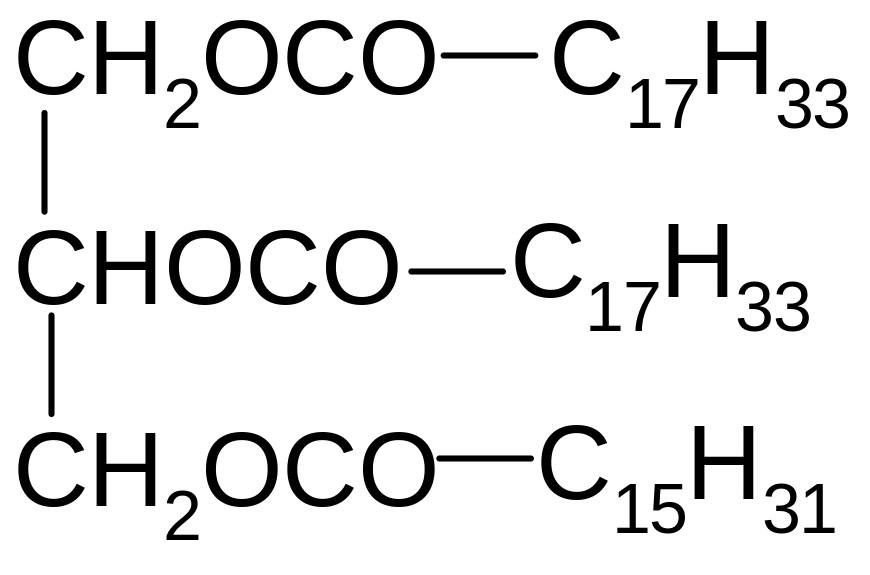
1) 1-linolenoyl-2-palmitoyl-3-stearoyl glycerol
2) 1-oleoyl-2-palmitoyl-3-stearoyl glycerol
3) 1,2-dilinolenoyl-3-palmitoyl glycerol
4) 1,2-dioleoyl-3-palmitoyl glycerol
5) 1,2-dioleoyl-3-stearoyl glycerol
3. Which aminoalcohol is contained in phosphatidylethanolamine?
1) serine
2) choline
3) taurine
4) colamin
5) propanolamine
4. What is the name of the complex saponifiable lipid formed by phosphatidic acid and choline?
1) lecithin
2) phospholipids
3) kolaminkefalin
4) Phosphatidylethanolamines
5) Phosphatidylserines
5. What is the structure of the amino alcohol, which is part of phosphatidylcholine?
СН3СН(ОН)NН2
НОСН2-СН2NН2
НОСН2-СН2N(СН3)2
НОСН2-СН2N+(СН3)3
НОСН2-СН2NН(СН3)
6. What is the structure of the amino alcohol, which is part of phosphatidylserine:
НОСН2-СН(NН2)-СООН
НОСН2-СН2N+(СН3)3
НОСН2-СН2NН(СН3)
НОСН2-СН2N(СН3)2
СН3СН(ОН)NН2
7. Which compound gives glycocholic acid as a product of the reaction with cholic acid?
CH3 COOH
CH2(NH2)COOH
CH3 CH (NH2) COOH
CH2 (NH2) CH2COOH
CH2(OH)CH(OH)CH2OH
8. Which compound gives taurocholic acid as a product of the reaction with cholic acid
CH2(SH)CH(NH2)COOH
HO3S – CH2 – CH2 –NH2
NH2 – CH2 – COOH
CH3 – C(O) – SKoA
HO3SCH2COOH
9. REAGENTS WHICH CAN BE USED TO DISTINGUISH TRIPALMITIN FROM TRIOLEIN ARE
1) Copper hydroxide (II)
2) iron chloride (III)
3) Trommer’s reagent
4) Fehling's reagent
5) bromine water
6) potassium permanganate solution
10. Which of the following compounds are formed by acidic hydrolysis of triacylglycerol?

1) Oleic, linoleic, stearic acid
2) Stearic, linoleic, linolenic acid
3) Sodium oleate, sodium stearate, sodium palmitate
4) Oleic acid, stearic acid, palmitic acid
5) Sodium stearate, sodium linolenoate, sodium linoleate
11. Which of the following compounds are formed by the saponification of triacylglycerol?
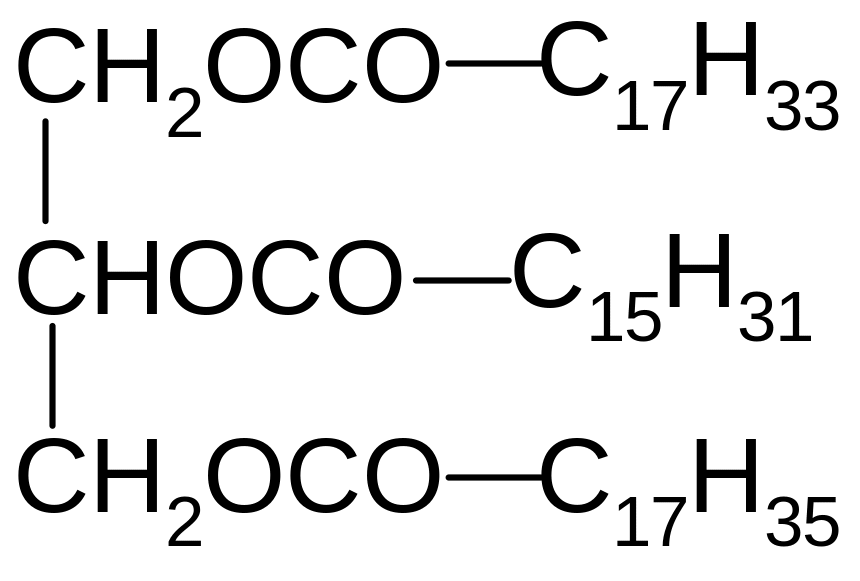
1) Sodium stearate, sodium linolenoate, sodium linoleate
2) Oleic acid, palmitic acid, stearic acid
3) Sodium oleate, sodium palmitate, sodium stearate
4) Stearic, linoleic, linolenic acid
5) Stearic, oleic, linoleic acid
12. What is the product of the reaction L-phosphatidic acid + ethanolamine →?
1) glycerophosphate
2) phosphatidylserine
3) colamincefalin
4) serincefalin
5) lecithin
13. Which of the following compounds are formed by the acidic hydrolysis of triacylglycerol?
1) oleic acid, palmitic acid, stearic acid
2) sodium palmitate, sodium oleate, sodium stearate
3) sodium oleate, sodium palmitate, sodium stearate
4) oleic acid, stearic acid, arachidonic acid
5) oleic, linoleic, stearic acid
14. What are type, mechanism and the product of the reaction of cholic acid with taurine?
1) ester, SN
2) ether, AN
3) ester, SE
4) amide, SE
5) amide, SN
15. What kind of bond will hydrolyze in phosphatidylethanolamine?
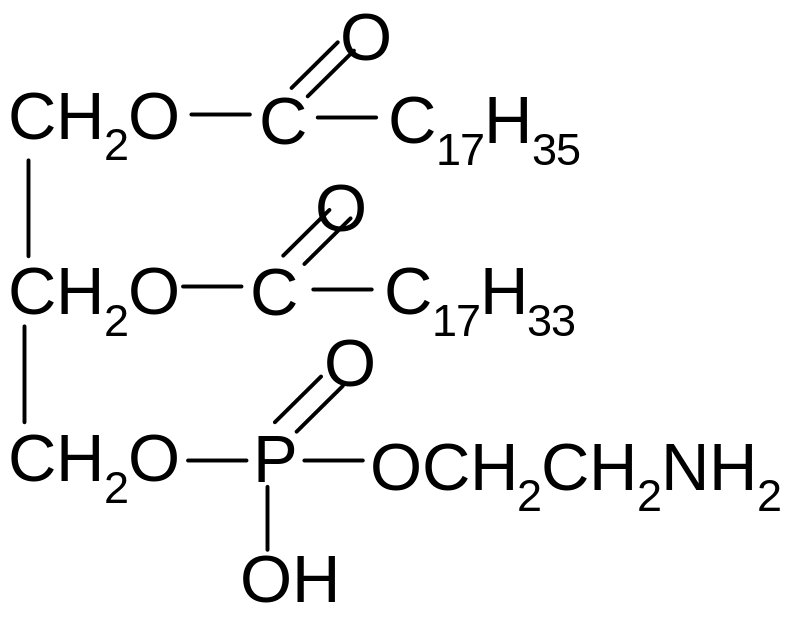
1) amide bond
2) peptide bond
3) glycosidic bond
4) ester bond
5) Ether bond
16. What bond may hydrolyze in glycocholic acid?

1) amide bond
2) hydrogen bond
3) glycosidic bond
4) ester bond
5) ether bond
17. Which of the compounds corresponds to the name of 1-oleoyl-2-palmitoyl-3-stearoilglycerol?
1) 2) 3)
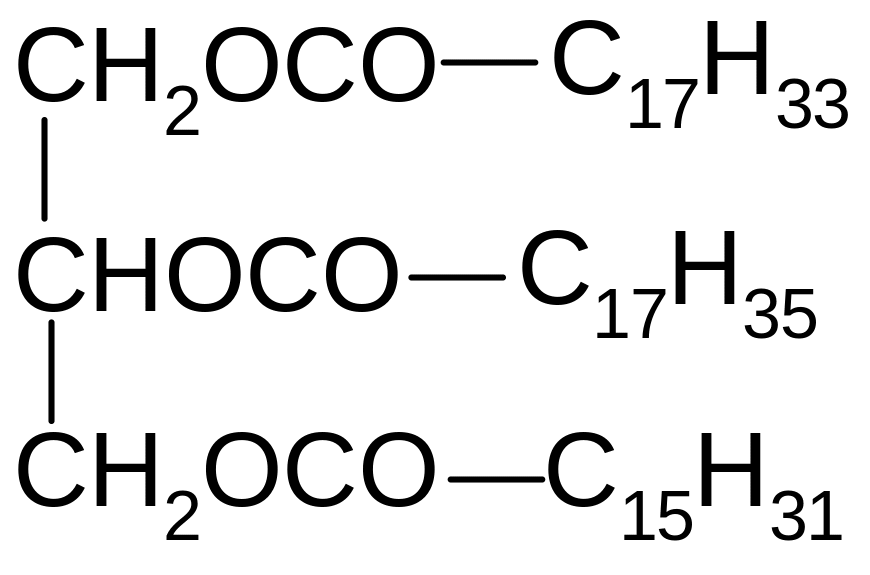

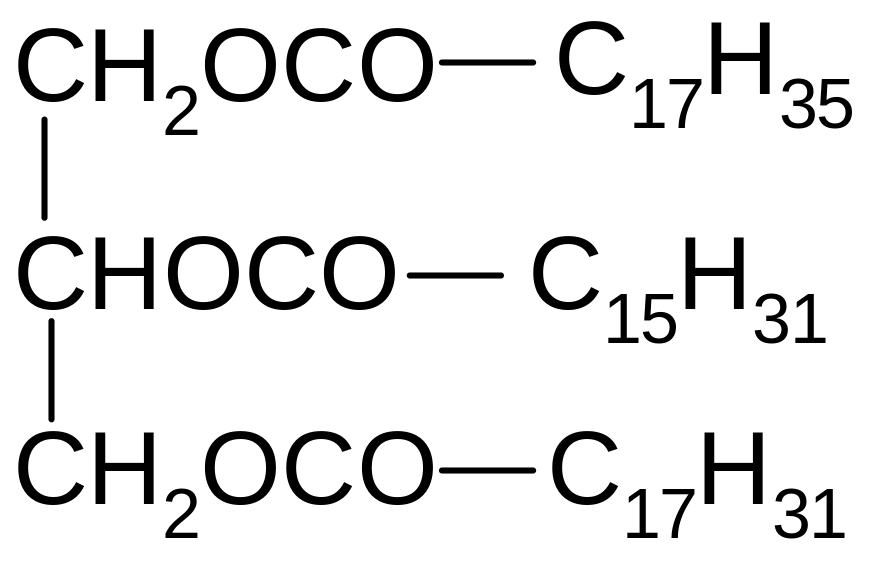
4) 5)
18. SOLID CONSISTENCE HAVE LIPIDS
1) triolein
2) tristearin
3) dilinoleostearin
4) palmitodistearin
5) dioleopalmitin
6) oleodipalmitin
7) trilinolein
19 LIQUID CONSISTENCE HAVE LIPIDS
1) tripalmitin
2) dipalmitostearin
3) oleopalmitostearin
4) dilinoleopalmitin
5) oleodipalmitin
6) dioleostearin
7) triolein
20. Which of the following fatty acids is essential?
C5 H11 COOH
C17 H33 COOH
C17 H35 COOH
C15 H31 COOH
C17 H31 COOH
21. Which of the following acids is essential fatty acid?
1) stearic acid
2) palmitic acid
3) linolenic acid
4) citric acid
5) cholic acid
22. TRUE STATEMENTS WITH RESPECT TO THE LINOLENIC ACID ARE
1) in the hydrocarbon radical there are two π-bonds
2) in the hydrocarbon radical contains 15 carbon atoms
3) at room temperature it is liquid
4) in a hydrocarbon radical has π, π-conjugated system
5) the fragment of saturated hydrocarbon radical is in a zigzag conformation
6) is not an essential fatty acid
23. CORRECT STATEMENTS ABOUT THE PROPERTIES AND STRUCTURE OF 1-OLEOYL-2-PALMITOYL-3-STEAROILGLYCEROL ARE
1) can be hydrolyzed in acidic and alkaline medium
2) liquid consistency
3) contains the essential fatty acids
4) reacts with bromine water
5) refers to complex saponifiable lipids
6) contains one saturated acid and two unsaturated acids
24. Which statement characterizes the structure and properties of ergosterol?
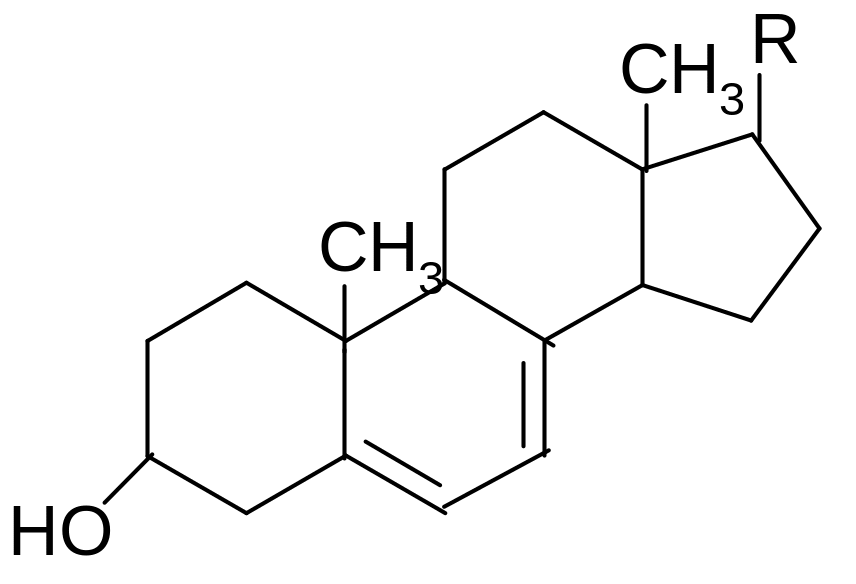
1) isomerizes to vitamin D3
2) can be hydrolised
3) is a primary alcohol
4) refers to the saponifiable lipids
5) can form an ester
25. Which statement characterizes structure and properties of cholesterol?

1) refers to the saponifiable lipids
2) discolour bromine water
3) forms of vitamin D2
4) is a tertiary alcohol
5) is hydrolyzed in acidic and alkaline medium
Section VIII. Biologically important heterocyclic compounds.
1. What is the name of compound with following structure?
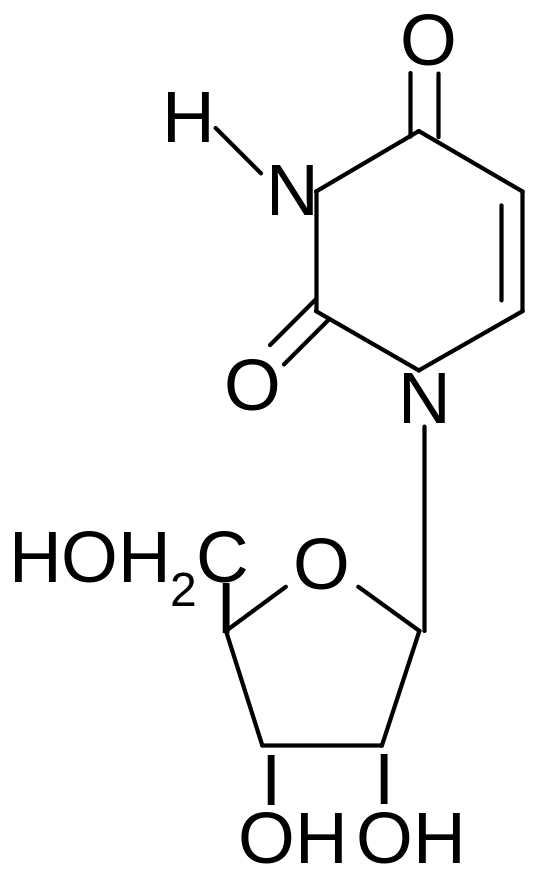
1) guanosine
2) adenosine
3) thymidine
4) cytosine
5) uridine
2. What is the name of compound with following structure?

1) hypoxanthine
2) guanosine
3) thymidine
4) adenosine
5) cytosine
3. Heterocyclic bases adenine and guanine are derivatived from?
1) pyridine
2) quinoline
3) pyrazole
4) purine
5) indole
4. Purine molecule consists of structures
1) pyrimidine and imidazole
2) pyrimidine and pyrazine
3) imidazole and pyrazine
4) two benzene molecules
5) pyridine and pyrrole
5. NICOTINAMIDE BELONGS TO VITAMINS
B1
B2
B3
В12
B6
РР
F
6. What bond is formed by the phosphorylation of GDF (guanozine-5’-diphosphate)?
1) Amide
2) Anhydrite
3) N-glycosidic
4) O-glycosidic
5) ester
7. Which type of bond forms during the interaction of uridine with phosphoric acid?
1) amide
2) Anhydrite
3) N-glycosidic
4) O-glycosidic
5) ester
8. Which type of bond forms during the interaction of uracil with D - ribose?
1) amide
2) Anhydrite
3) N-glycosidic
4) ester
5) O-glycosidic
9. Which mechanism of nitration of pyridine?
SN
SR
SE
AN
AE
10. What is the product of the reaction: β-methylpyridine + [O] →
1) pyridine-2-carboxylic acid
2) N-methylpyridinium hydroxide
3) β-hydroxypyridine
4) Nicotinic acid
5) Isonicotinic acid
11. What products are formed by complete hydrolysis of thymidine-5-phosphate in acidic medium?

1) thymine, 2-deoxy--D-ribofuranose, phosphoric acid
2) thymine, -D-ribofuranose, phosphoric acid
3) timidinmonophosphate, phosphoric acid
4) thymine, 2-deoxy-D-ribofuranosyl
5) timidinmonophosphate
12. What is the product of the reaction: Pyridine + sulfuric acid →?
1) pyridine-2-sulfonic acid
2) pyridine-3-sulfonic acid
3) pyridine-4-sulfonic acid
4) pyridine-2 ,4-disulfonic acid
5) pyridine-3 ,4-disulfonic acid
13. What are mechanism of nitration of pyridine and position of nitro-group in the product of the reaction?
1) SE, β-position
2) SE, α-position
3) SE, γ-position
4) SN, α-position
5) SN, β-position
14.
What products are formed by the reaction: Uridine + H+,
HOH![]() ?
?
1) Uridylic acid
2) Uridine mono phosphate
3) deoxyribose
4) uracil, ribose
5) uracil, deoxyribose
15. Which product is formed by the reaction: Pyridine + HCl →?
1) 2-chloropyridine
2) 3-chloropyridine
3) methylpyridinium chloride
4) pyridinium chloride
5) γ-chloropyridine
16. Imidazole derivatives are widespread in the animal and plant world as a part of vitamin B12. What the reason why even strong oxidants can oxidize imidazole ring hard?
1) the low strength of molecules
2) the molecule is unsaturated
3) asymmetric structure of molecules
4) imidazole is aromatic compound
5) the low reactivity of imidazole molecules
17. Which product is formed by the reaction: pyrrole + 2 [H] →
1) pyrrolidine
2) pyridine
3) pyrroline
4) pyrimidine
5) piperidine
18. Which product is formed by the reaction: pyrrole 4 + [H] →
1) pyrrolidine
2) pyridine
3) pyrroline
4) pyrimidine
5) piperidine
19. Which product is formed by the reaction: pyridine + 6 [H] →
1) pyrrolidine
2) pyrimidine
3) piperidine
4) pyrroline
5) pyrrole
20. Nicotinic acid is derivative of?
1) pyran
2) pyridine
3) purine
4) pyrimidine
5) pyrazole
21. CONDENSED HETEROCYCLES ARE
1) purine
2) pyran
3) indole
4) pyrazole
5) imidazole
6) pyrrolidine
22. CORRECT STATEMENTS FOR THYMINE ARE
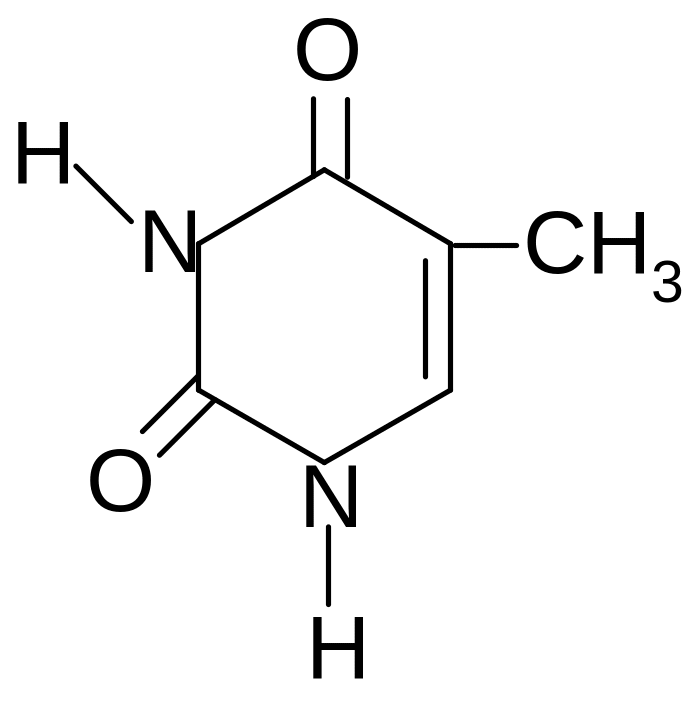
1) is formed by hydrolysis of thymidine
2) is a derivative of purine
3) forms thymidine with ribose
4) is hydrolyzed in an acidic medium
5) capable of lactam-lactim tautomerism
6) is included in the nucleotide composition of RNA fragments
23. Which mechanism of iodination of pyrrole?
SN
SR
SE
AN
AE
24. Find the wrong named compound of the following compoundes.
1)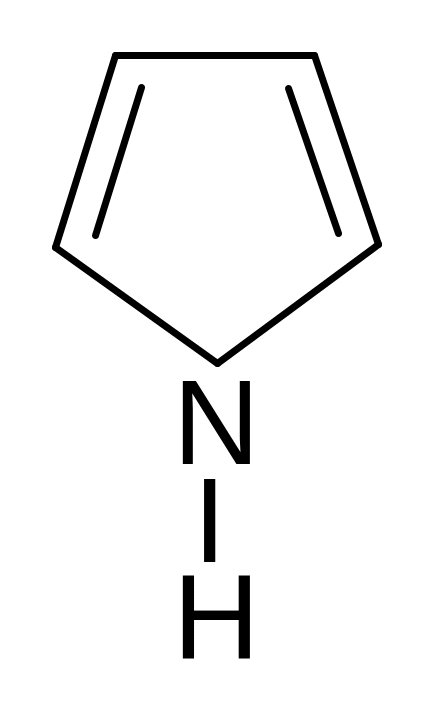 2)
2)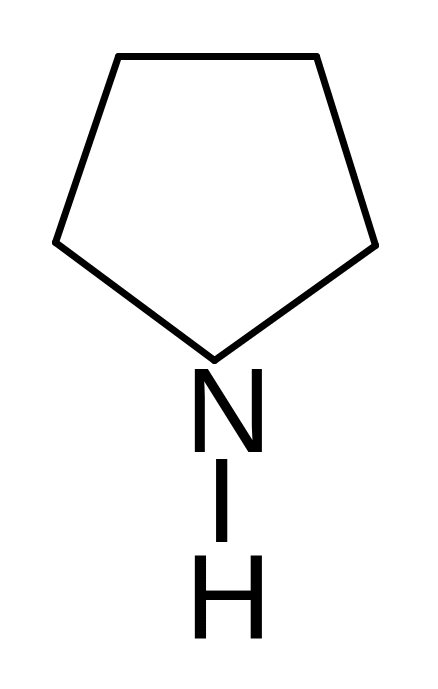 3)
3)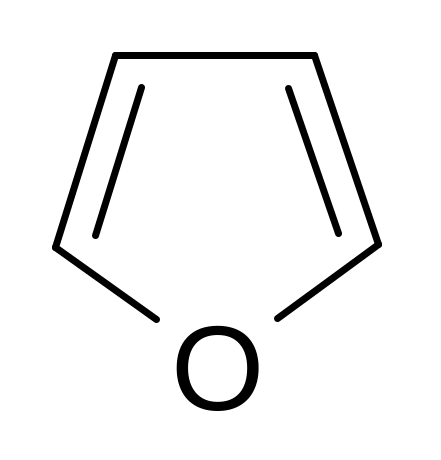 4)
4)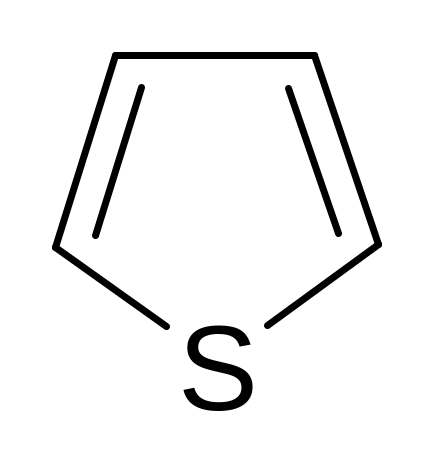 5)
5)
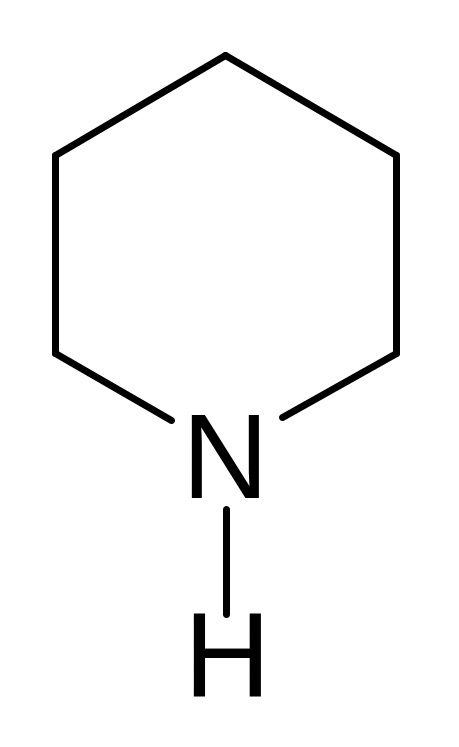
pyrrole pyrroline furan thiophene piperidine
25. AMPHOLYTES ARE
1) pyridine
2) pyrimidine
3) imidazole
4) pyrazole
5) pyrrole
6) oxazole
7) thiazol
26. COMPOUNDS WHICH FORM VITAMIN B3 AFTER OXIDATION ARE
1) β-methylpyridin
2) γ-methylpyridin
3) quinoline
4) nicotine
5) pyran
6) purine
27. NUCLEIC BASES ARE
1) thymine
2) purine
3) uracil
4) guanine
5) xanthine
6) pyrimidine
7) hypoxanthine
Safety instructions
1. How are the pieces of sodium kept in the laboratory?
1) Under a layer of paraffin and liquid paraffin
2) Under water
3) The water layer of sulfuric acid and naphthalene
4) Under a layer of liquid ammonia and castor oil
5) Under a layer of ethylene dichloride and camphor oil
2. In industrial hygiene chemicals characterized by the values of maximum permissible concentration (MPC) of hazardous substances in workplace air. Which of the following indicates that the MPC of (formaldehyde) = 0.5 mg/m3, hazard class – 2?
1) an extremely dangerous substances
2) a moderately dangerous substances
3) a high-risk substances
4) is almost not dangerous
5) low-hazard substances
3. What are the first aid measures must be taken when burn from strong acids?
1) Immediately wash with water, 1% solution of sodium bicarbonate (baking soda), and then to put a compress soaked in this solution
2) Do nothing, sit and wait for the ambulance to arrive
3) Immediately wash with a weak solution of potassium permanganate
4) Immediately wash with water, apply a compress soaked in 1% acetic acid solution
5) Immediately lubricate the affected area with 5% an alcoholic solution of iodine
4. If a bleeding does not stop immediately apply a piece of haemostatic wool. How it can be made in the lab?
1) Hygroscopic cotton wool soaked 10% solution of ferric chloride (III), or 3% hydrogen peroxide solution
2) Hygroscopic cotton wool soaked a 10% solution of potassium permanganate or 3% solution of ammonia
3) Soaked bandage a 10% solution of ethyl alcohol
4) Soaking hygroscopic cotton 10% solution of glycerol or 3% solution of ammonia
5) Soaked bandage a 10% solution of boric acid
5. In case of poisoning what compounds are used as antidotes - mercapto compound (unitiol, dimercaptosuccinic acid, etc.)?
1) Poisoning with calcium compounds, alkaline earth metals
2) Poisoning with arsenic, heavy metals
3) Poisoning with sodium compounds, alkali metals
4) Bromine poisoning, halides
5) Poisoning alkaloid
Reviewed and approved at the meeting of the Biochemistry Department
Protocol № _____, « ______ » _______________ 2016
Head of the Biochemistry Department,
Professor Sharipov K.O.
Compiled by:
Almabekova A.A., Nechepurenko E.V.Karlova E.K.
(tel: .7219)

